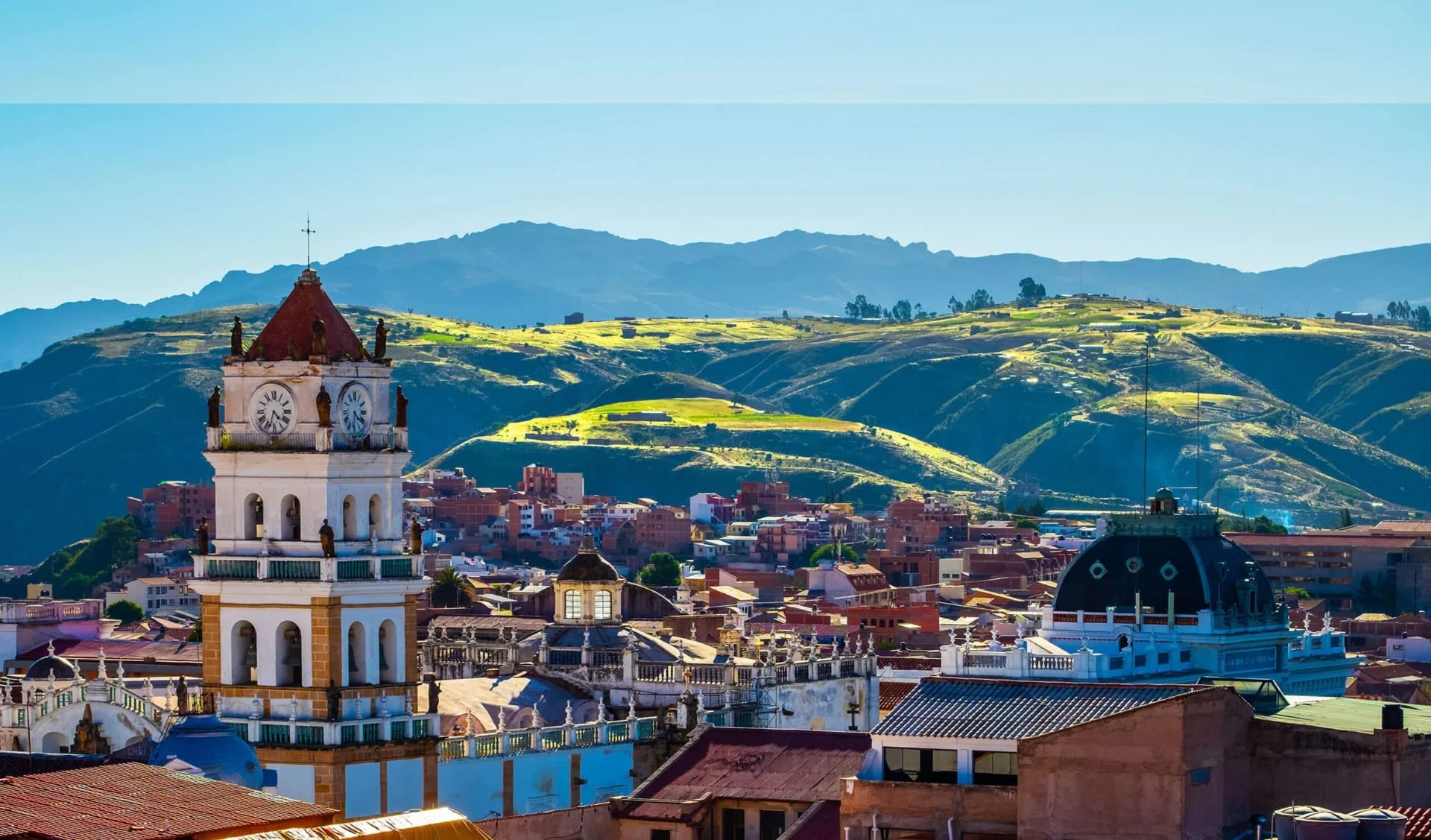Take me to the recipes!
Bolivia, a landlocked country nestled in the heart of South America, boasts a rich tapestry of culture, history, and breathtaking landscapes. As we delve into the world of Bolivian food, we discover a culinary heritage shaped by history, climate, and the essence of traditional Bolivian Food recipes.
In this exploration of Bolivian food, we unravel the secrets behind its diverse flavors, uncover the historical influences that have shaped its cuisine, and delve into the health implications of this unique culinary tradition.
Bolivian food is like a feast for the senses, with its vibrant colors, bold flavors, and unexpected combinations.
Read on to embark on a gastronomic journey through the heart of Bolivia, where each dish tells a story of the country’s rich history and vibrant culture.
Bolivian Food – Key Takeaways
- Bolivian food is like a box of chocolates, you never know what you’re going to get but you’re sure to enjoy it.
- Bolivian cuisine reflects a diverse blend of indigenous, Spanish, and other South American influences.
- Staple ingredients include quinoa, potatoes, corn, and various meats, creating a robust and hearty culinary experience.
- Traditional Bolivian recipes often draw from pre-Columbian traditions, showcasing the country’s indigenous roots.
- Bolivia’s geography and climate significantly impact the variety of ingredients available and the methods of preparation.
- Bolivian food is known for its bold flavors, with dishes ranging from savory stews to sweet treats.
- The health implications of Bolivian cuisine are largely positive, thanks to the emphasis on natural, unprocessed ingredients.
- Salteñas, a type of savory pastry, stand out as one of Bolivia’s most beloved and iconic national dishes.
Take me to the recipes!
Where is Bolivia?

Bolivia is a landlocked country in South America, sharing borders with Brazil, Paraguay, Argentina, Chile, and Peru. The western half of the country is characterized by the vast Andes mountains, featuring steep slopes and snow-capped peaks.

Index of Contents
- Take me to the recipes!
- More Articles for Your Pleasure
- 10 Fascinating Facts about Bolivia
- Bolivian History and the Affect it has had on Bolivian Food
- How Bolivia’s Climate and Geography has Influenced Bolivian Food
- Understanding the Essence of Bolivian Food Recipes
- Traditional Bolivian Food
- What are the Health Implications of Bolivia’s Cuisine?
- Bolivia’s National Dish
- The Flavors of Bolivian Cuisine
- Bolivian Food Recipes – Great Examples to Try at Home
- Conclusion
- Frequently Asked Questions
Savor iconic Bolivia Food Recipes – Click on each tantalizing picture to open up the Recipe.
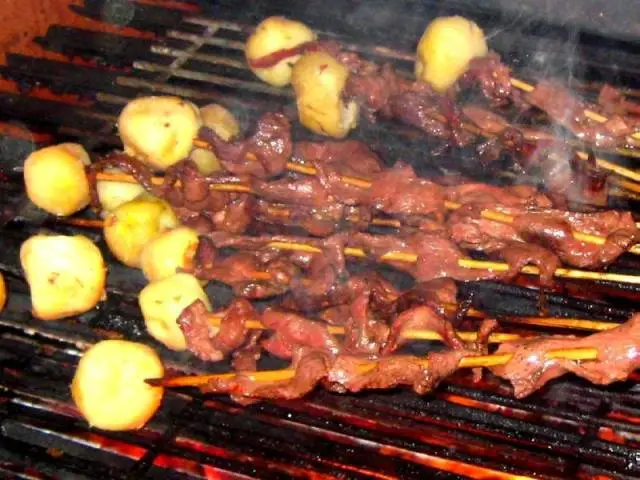
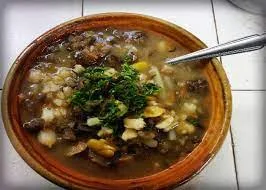
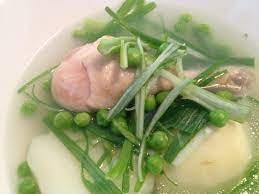
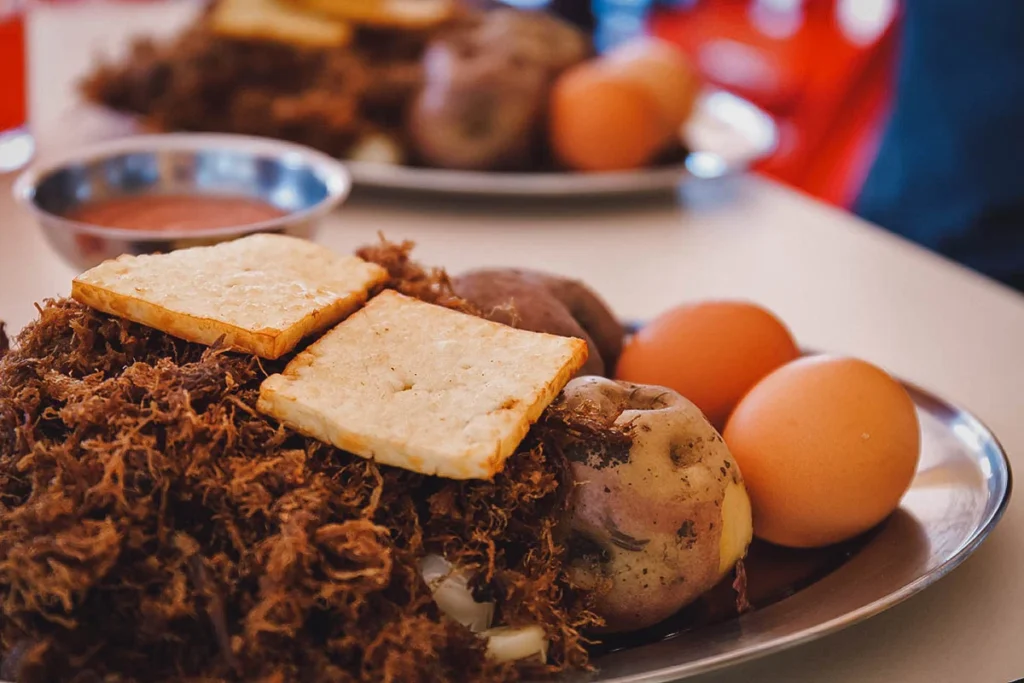
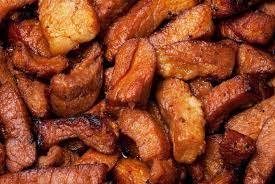
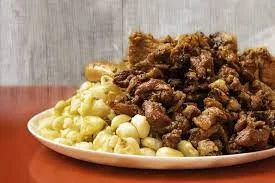
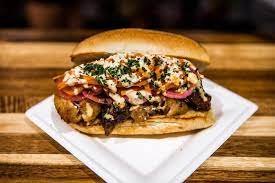
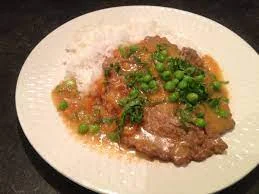
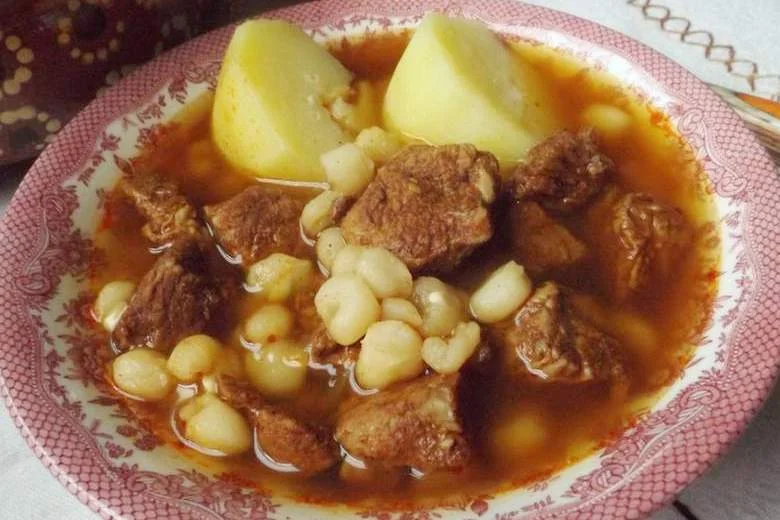
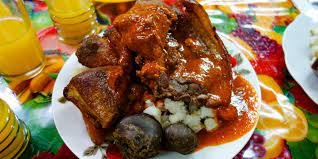
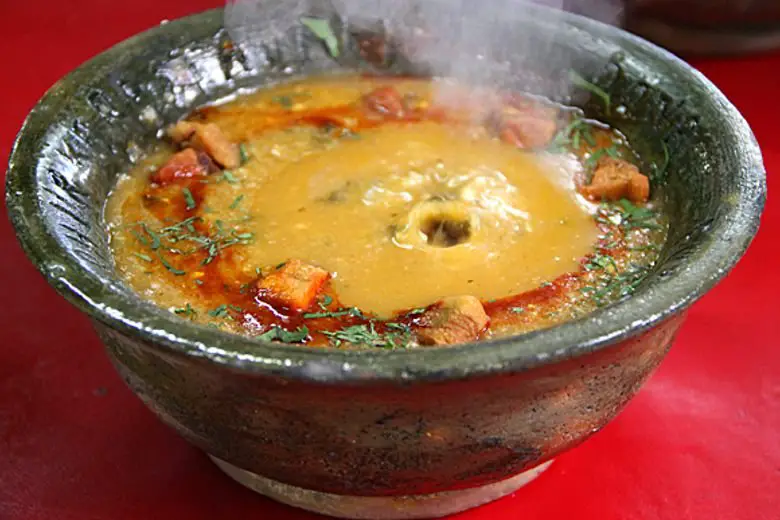
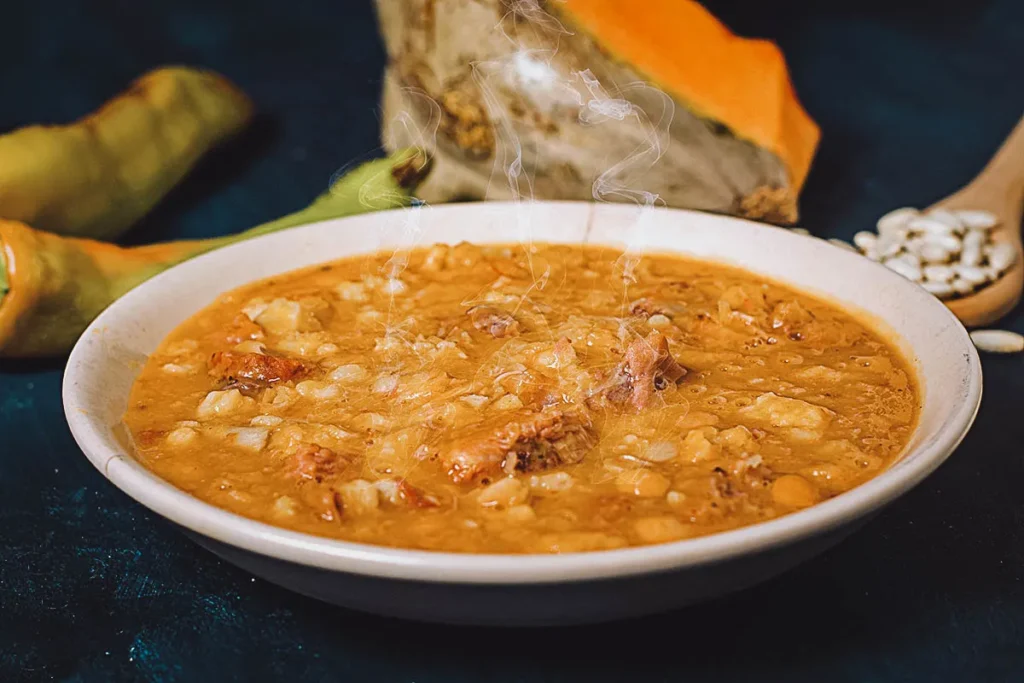
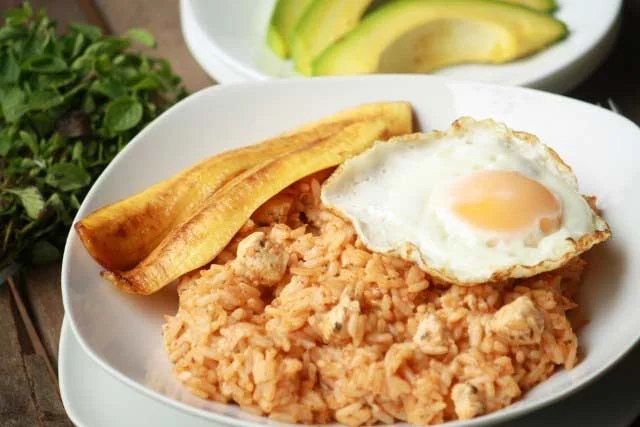
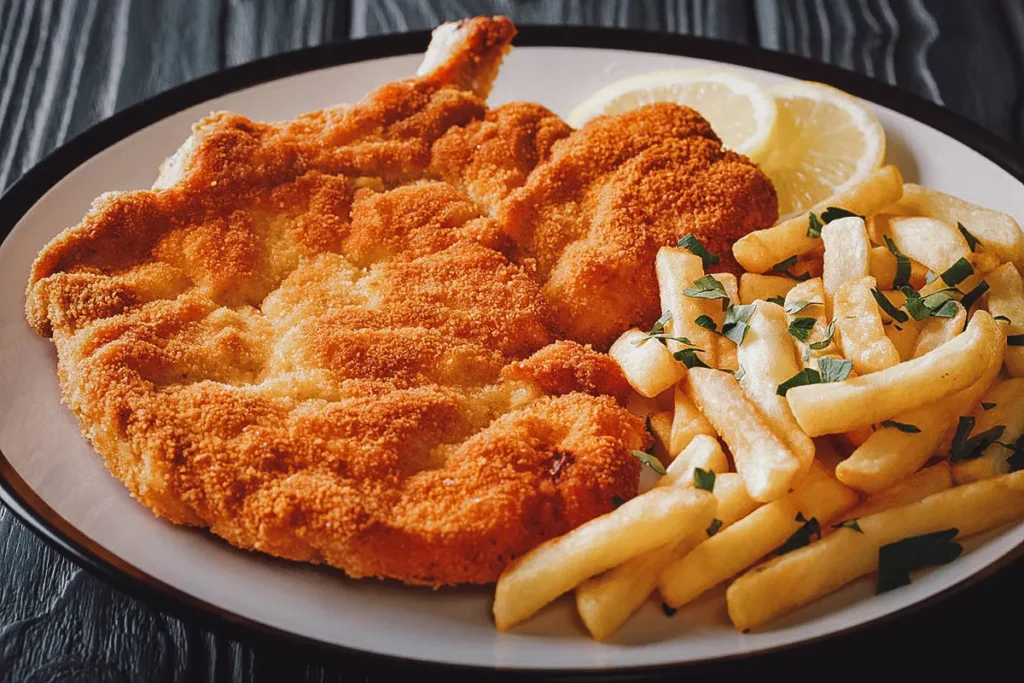
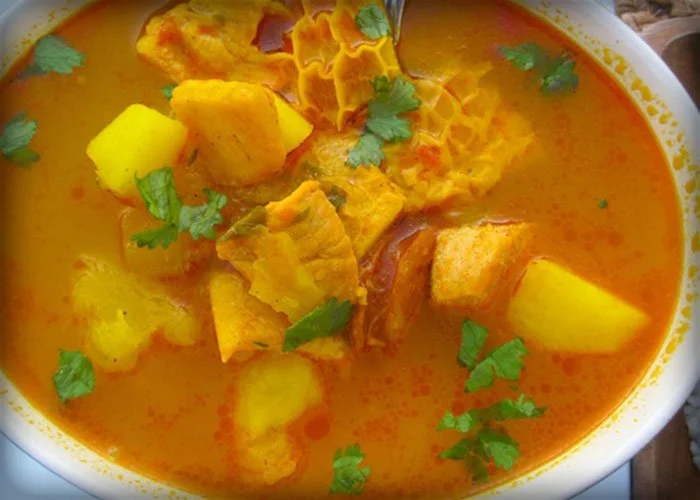

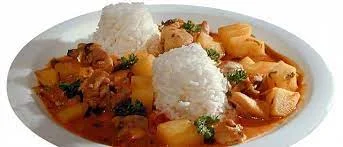
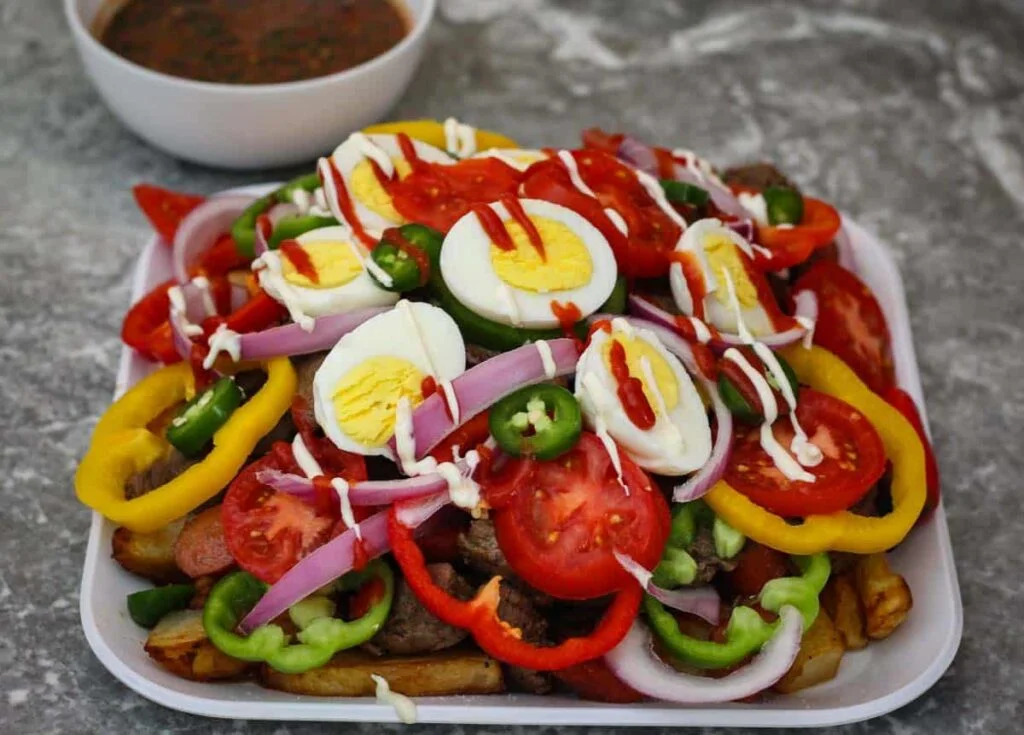
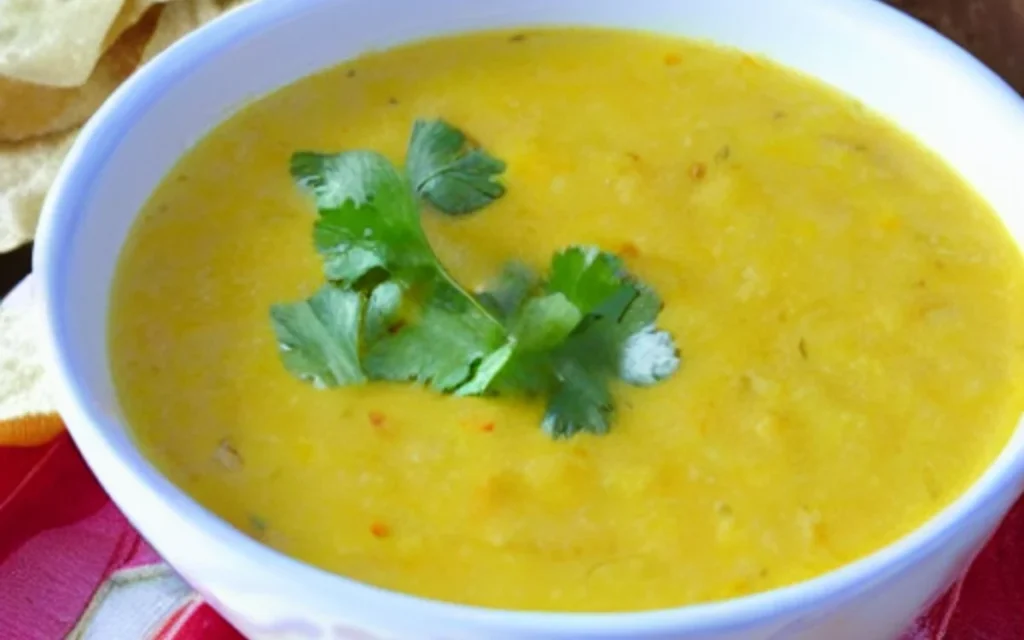

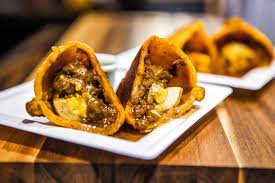
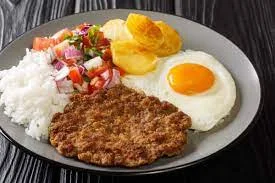
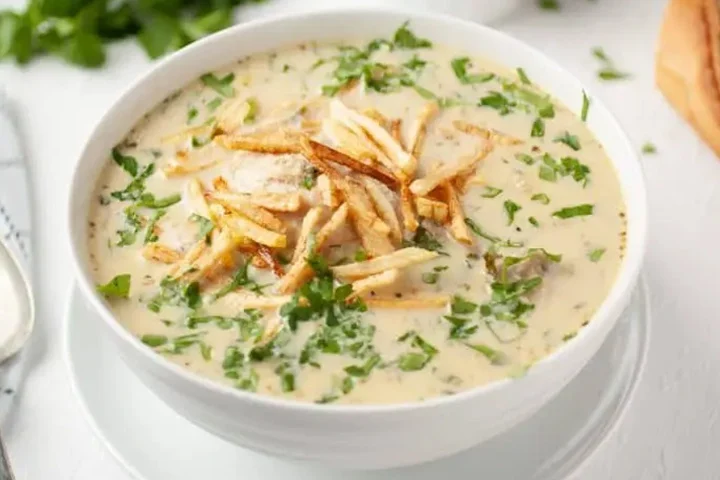
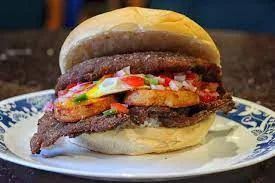
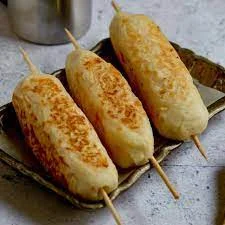
More Articles for Your Pleasure
- North and South American Cuisine – A Culinary Expedition
- European Cuisine: Savor the Continent’s Best Culinary Secrets!
- African Cuisine: Discover the Bold Flavors & Global Charm!
- Asian Cuisine Unlock its Secrets – Taste, Health & Global Influence!
- Oceania Cooking: A Culinary Journey Through the Pacific
10 Fascinating Facts about Bolivia
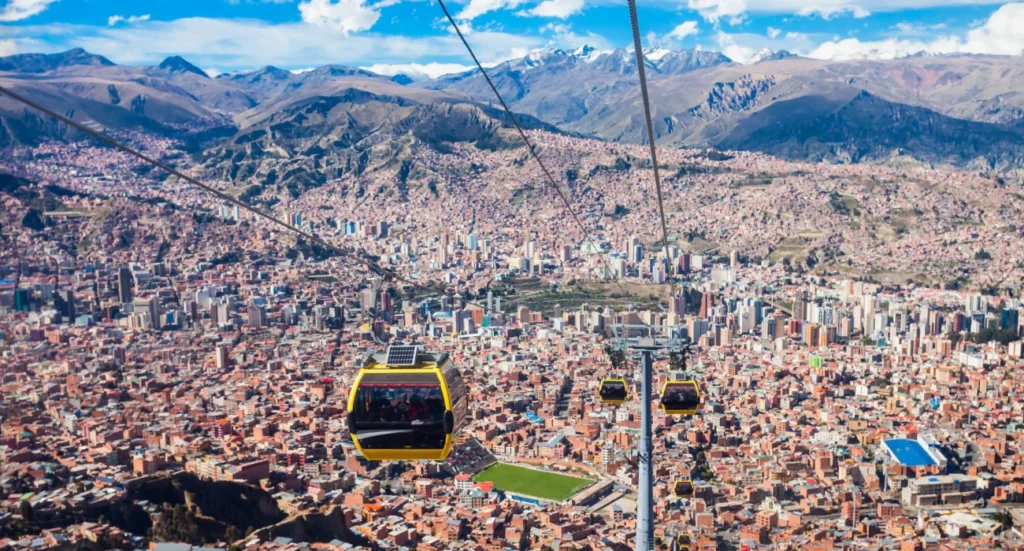
Bolivia, with its stunning landscapes and rich cultural heritage, is a country full of surprises. As you explore this South American gem, you’ll encounter some fascinating and sometimes downright quirky laws and facts that are sure to pique your interest. Here are 10 of the most intriguing ones:
Coca Leaves Are Legal

Despite being the primary ingredient in cocaine, chewing coca leaves is legal and widely practiced in Bolivia. The leaves have cultural and medicinal significance for indigenous communities.
Highest Capital City
La Paz, Bolivia’s capital, holds the title of the world’s highest capital city, sitting at an altitude of over 11,000 feet (3,400 meters) above sea level.
Witches’ Market
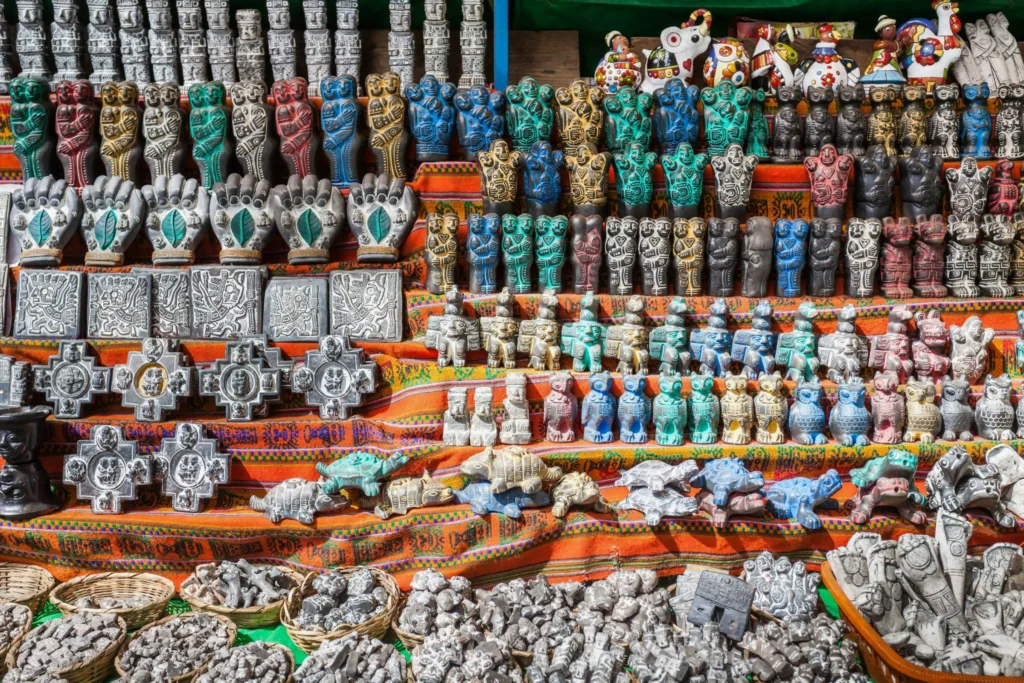
In La Paz, you’ll find the Mercado de las Brujas, or Witches’ Market, where vendors sell a variety of traditional remedies, potions, and talismans believed to bring good luck or ward off evil spirits.
Frog Smoothies
It’s believed that drinking frog smoothies can cure a range of ailments in Bolivia. While it may sound strange to some, locals swear by its health benefits.
Zebras as Traffic Wardens

La Paz has an unusual traffic control measure – people dressed as zebras help manage traffic and promote pedestrian safety, particularly in busy areas.
Landlocked Country with a Navy
Bolivia lost its access to the sea in the War of the Pacific (1879-1884) but maintains a navy with vessels on Lake Titicaca, the world’s highest navigable lake.
No McDonald’s:
Bolivia is one of the few countries in the world without a McDonald’s restaurant. The fast-food giant closed its Bolivian locations in 2002 after failing to gain traction in the market.
Cholitas Wrestling

Indigenous women known as “cholitas” participate in a unique form of wrestling called Lucha Libre, blending traditional attire with modern combat sports in a colorful spectacle.
San Pedro Prison Tours

In La Paz, tourists can take guided tours of San Pedro Prison, known for its unique system where inmates run businesses and live with their families inside the prison walls.
Annual El Tío Festival
In the mining town of Oruro, Bolivia, an annual festival honors El Tío, the devil-like figure believed to inhabit the mines and protect the miners. The festival features vibrant costumes, music, and dances.
Unique Wildlife: Pink Dolphins and Butterfly Sanctuaries

In Bolivia, you can find special animals like the pretty pink Bolivian river dolphins living in the rivers of the Amazon basin. Also, Bolivia has one of the biggest butterfly sanctuaries worldwide. It covers 24 hectares and is home to more than 1,000 kinds of butterflies. This sanctuary lets you see the amazing variety of animals and plants found in Bolivia.
Bolivia’s laws and traditions may seem unconventional to outsiders, but they reflect the country’s rich cultural tapestry and unique identity. Embrace the quirks and marvel at the wonders as you explore this fascinating land.
Bolivian History and the Affect it has had on Bolivian Food
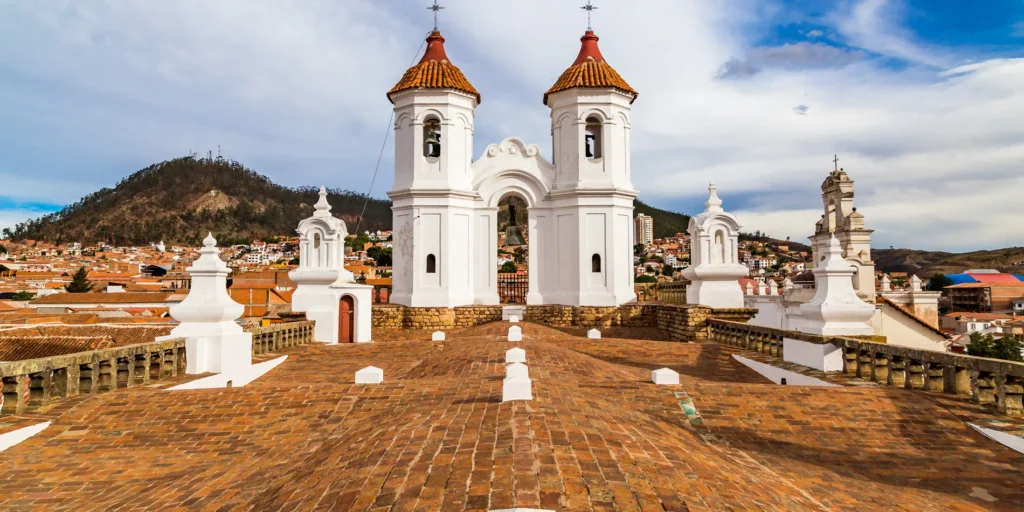
Bolivia is a land of diverse geography, culture, and cuisine. From the high Andes to the low Amazon, from the colonial legacy to the indigenous heritage, Bolivia’s food reflects its rich and complex history.
One of the most ancient and influential civilizations in Bolivia was the Tiwanaku, who flourished in the altiplano region from around 1500 BC to 1200 AD. They developed advanced techniques of agriculture, irrigation, and astronomy, and cultivated crops such as potatoes, quinoa, and corn.
These staples are still widely consumed in Bolivia today, especially in the highlands, where they provide sustenance and comfort in the cold climate.
The arrival of the Spanish conquistadors in the 16th century brought new ingredients, animals, and cuisines to Bolivia. The Spaniards introduced wheat, rice, beef, pork, chicken, cheese, and wine, among other products, and influenced the local cooking with their own styles and techniques.
This has Resulted in a Cosmopolitan Population
They also mixed with the indigenous population, creating a mestizo culture that blended European and native traditions. Bolivia also received influences from other immigrant groups, such as Germans, Italians, Arabs, and Africans, who settled in different regions of the country and contributed to its culinary diversity.
For example, in the eastern lowlands, where the climate is tropical and humid, the cuisine is based on fruits, vegetables, fish, and yuca, a root vegetable that is used to make snacks like zonzo or sonso. In this area, one can also find dishes with German or Italian origins, such as sausage, bread, pasta, and pizza.
Bolivian food is not only a product of its history, but also a way of expressing its identity and culture. Bolivians are proud of their food and enjoy sharing it with others. Some of the most popular and representative dishes
- salteñas baked empanadas filled with meat and vegetables;
- pique macho, a spicy dish of beef, sausages, fries, and eggs;
- sopa de maní, a peanut soup with noodles and meat;
- silpancho, a thin steak topped with eggs, rice, potatoes, and salad.
These and many other dishes showcase the variety and richness of Bolivian cuisine, a delicious reflection of its history.
How Bolivia’s Climate and Geography has Influenced Bolivian Food

How Bolivia’s Climate and Geography has Influenced Bolivian Food Bolivia is a country with a great diversity of climate and geography, ranging from the tropical lowlands of the Amazon basin to the arid highlands of the Andean plateau.
These different regions have shaped the food culture of Bolivia, as people have adapted to the local conditions and resources. The lowlands, which cover more than two-thirds of Bolivia, have a warm and humid climate that allows the cultivation of a variety of fruits, vegetables, and grains. Some of the most common crops are yuca, plantain, corn, rice, beans, and peanuts.
The Differences Between the Lowlands and the Highlands are Extreme
The lowlands are also rich in fish and wildlife, such as catfish, piranha, caiman, and capybara. The cuisine of this region is influenced by the indigenous, African, and Brazilian cultures, and features dishes such as majadito (rice with dried meat), masaco (mashed plantain with cheese or meat), and locro (a stew with corn, beans, and meat).
The highlands, on the other hand, have a cold and dry climate that limits the agricultural production. The main crops are potatoes, quinoa, and barley, which are resistant to frost and drought.
The highlands are also home to the camelids, such as llamas, alpacas, and vicuñas, which provide meat, wool, and leather. The cuisine of this region is influenced by the Spanish, German, and Italian cultures, and features dishes such as chuño (freeze-dried potatoes), charque (salted and dried meat), and salteñas (baked pastries filled with meat and vegetables).
The valleys, which lie between the lowlands and the highlands, have a temperate and semitropical climate that allows the cultivation of crops such as wheat, coffee, cacao, and sugarcane. The valleys are also known for their wine and cheese production, as well as their orchards and flowers.
The cuisine of this region is influenced by the colonial, mestizo, and criollo cultures, and features dishes such as pique macho (a spicy dish of meat, sausages, fries, and eggs), sopa de maní (a peanut soup with noodles and meat), and humintas (corn cakes with cheese and herbs). Bolivian food is not only a result of its climate and geography, but also a way of celebrating its diversity and identity.
Understanding the Essence of Bolivian Food Recipes
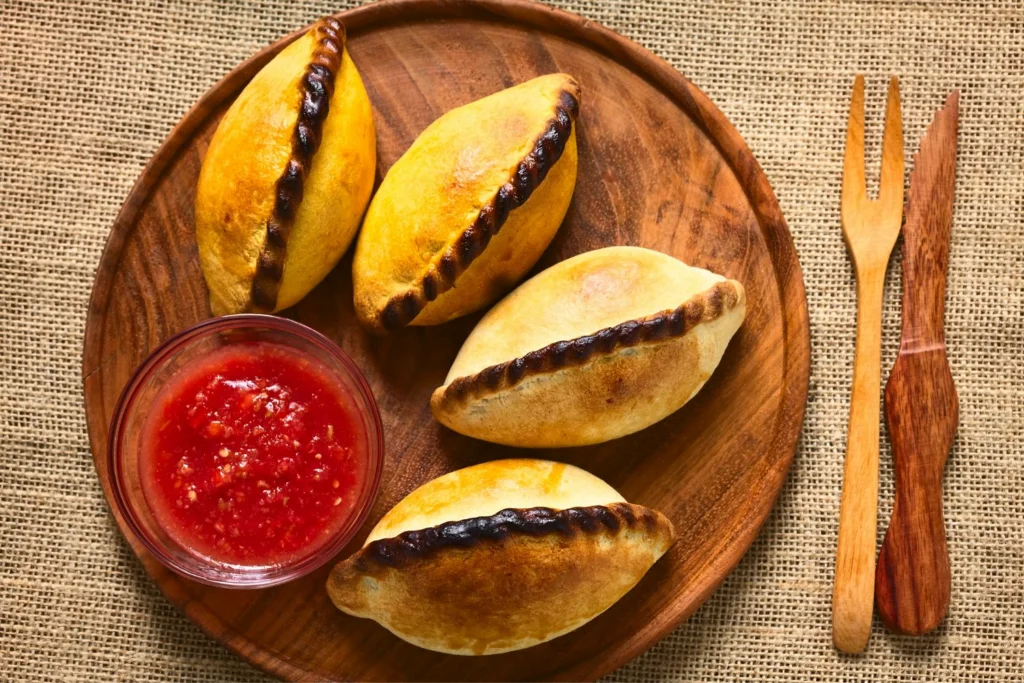
Bolivian food recipes capture the essence of the country’s culinary traditions. Whether it’s the preparation of traditional dishes like Salteñas or the use of native ingredients like quinoa and potatoes, Bolivian recipes showcase a harmonious blend of indigenous and colonial influences.
Bolivian food is like a symphony, with each dish playing its own unique part to create a complex and satisfying whole.
Exploring these recipes offers a glimpse into Bolivia’s rich cultural heritage.
Traditional Bolivian Food

Bolivia is a country with a diverse and rich culinary heritage, influenced by its geography, climate, history, and culture. Bolivian food is characterized by the use of native ingredients, such as potatoes, corn, quinoa, chili peppers, and cheese, as well as imported products, such as rice, wheat, beef, and chicken.
Bolivian food also varies by region, reflecting the different ecosystems and lifestyles of the people. Some of the most traditional and typical dishes of Bolivia are:
- Salteñas: Baked pastries filled with meat and vegetables in a spicy broth. They are eaten as a mid-morning snack and are considered a national emblem of Bolivia.
- Pique macho: A hearty dish of beef, sausages, fries, eggs, and cheese, seasoned with chili peppers and tomatoes. It is a popular dish in the city of Cochabamba and is usually shared among friends.
- Sopa de maní: A creamy peanut soup with noodles and meat, garnished with parsley and fried potatoes. It is a typical dish of the valleys and is often served at weddings and celebrations].
- Silpancho: A thin steak topped with eggs, rice, potatoes, and salad. It is a common dish in the city of Oruro and is said to have originated from the miners who needed a lot of energy.
Bolivian food is not only delicious, but also a way of expressing the identity and diversity of the country. Bolivians enjoy their food with pride and joy, and often share it with their family and friends.
What are the Health Implications of Bolivia’s Cuisine?

Bolivia’s cuisine is a reflection of its diverse geography, climate, history, and culture. It offers a variety of dishes that can provide nutrition and satisfaction to the people. However, it also poses some health challenges that need to be addressed.
One of the main health benefits of Bolivia’s cuisine is the use of native ingredients, such as potatoes, corn, quinoa, and beans, which are rich in carbohydrates, protein, fiber, and minerals. These foods can help prevent malnutrition, especially in the highlands, where food insecurity is still a problem.
Bolivia’s cuisine also incorporates fruits, vegetables, and fish, which are sources of vitamins, antioxidants, and omega-3 fatty acids. These foods can help prevent chronic diseases, such as diabetes, cardiovascular disease, and cancer.
Bolivian food is so delicious, you’ll forget you’re eating healthy
One of the main health risks of Bolivia’s cuisine is the excessive consumption of salt, fat, and sugar, which are added to enhance the flavor and texture of the dishes. These ingredients can increase the risk of hypertension, obesity, and dental decay.
Bolivia’s cuisine also relies heavily on meat, especially beef and pork, which are high in saturated fat and cholesterol. These foods can increase the risk of high blood pressure, high cholesterol, and heart disease.
Bolivia’s cuisine is a delicious and diverse expression of its identity and heritage. It can be enjoyed in moderation and balance, with an awareness of its health implications.
By making some adjustments, such as reducing the intake of salt, fat, and sugar, and increasing the intake of fruits, vegetables, and fish, Bolivia’s cuisine can be a source of health and well-being for the people.
Bolivia’s National Dish

Bolivia is a country with a diverse and rich culinary heritage, influenced by its geography, climate, history, and culture. Among the many dishes that represent its identity and diversity, one stands out as the national dish of Bolivia: the salteña.
A salteña is a baked pastry filled with meat and vegetables in a spicy broth. The name comes from the city of Salta, Argentina, where the first known baker of these delicacies was born. He later moved to Potosí, Bolivia, where he popularized his recipe.
Salteñas are eaten as a mid-morning snack, usually with a hot drink. They are considered a symbol of Bolivian pride and joy and are often shared with family and friends. Salteñas can be found in street stalls, bakeries, and restaurants throughout the country, and each region has its own variation.
Exploring Bolivian Food Ingredients: The Flavors of Bolivian Cuisine

The flavors of Bolivian cuisine are a symphony of tastes, combining indigenous ingredients with the influences of Spanish and South American cooking styles.
From the earthiness of quinoa to the richness of llama meat, exploring the unique ingredients of Bolivian food provides insight into the country’s culinary identity.
Bolivian Food Recipes – Great Examples to Try at Home
Embark on your culinary adventure with these delightful Bolivian food recipes. From the iconic Salteñas to the comforting Sopa de Maní, these dishes capture the essence of Bolivia’s diverse and flavorful cuisine.
Prepare to tantalize your taste buds with these authentic Bolivian recipes.
Bolivian Food – Anticucho – The smell of charring meat and fresh herbs

History, Background, and Region of Anticucho
Anticucho, a popular dish in Bolivia, has deep roots in the country’s culinary heritage. Originating from the pre-Columbian era, it was influenced by indigenous cooking methods and later adapted with Spanish colonial ingredients.
Traditionally associated with street food culture, Anticucho has evolved to become a cherished part of Bolivian gastronomy. The dish is commonly enjoyed during festivals, gatherings, and as a delightful snack.
Ingredients
- 1.5 pounds beef heart, cut into bite-sized pieces
- 1 cup aji panca paste (Peruvian red chili pepper paste)
- 4 cloves garlic, minced
- 1 teaspoon ground cumin
- 1 teaspoon dried oregano
- 1/2 cup red wine vinegar
- Salt and pepper to taste
- Skewers, soaked in water for at least 30 minutes
Recipe
Marinating the Beef Heart
- In a bowl, combine aji panca paste, minced garlic, ground cumin, dried oregano, red wine vinegar, salt, and pepper.
- Add the beef heart pieces to the marinade, ensuring they are well-coated.
- Cover the bowl and refrigerate for at least 2 hours or overnight for optimal flavor.
Skewering and Grilling
- Preheat the grill to medium-high heat.
- Thread the marinated beef heart pieces onto the soaked skewers, allowing for even cooking.
- Grill the skewers for about 8-10 minutes, turning occasionally, until the meat is cooked to your desired level of doneness.
Serving
- Remove the skewers from the grill and let them rest for a few minutes.
- Serve the Anticuchos hot, accompanied by traditional side dishes like boiled potatoes and aji sauce.
Serving Size and Cooking Time
- Serving Size: 4 people
- Estimated Cooking Time: 2 hours (including marinating time)
Nutritional Information (Per Serving)
- Calories: Approximately 300 calories
- Protein: 25g
- Fat: 12g
- Carbohydrates: 18g
- Fiber: 3g
Anticucho offers a flavorful journey through Bolivia’s culinary past, combining indigenous traditions with contemporary influences, making it a must-try for those seeking an authentic taste of Bolivian cuisine.
Bolivian Food – Pastel de Queso

History, Background, and Region of Pastel de Queso
Pastel de Queso, a delightful Bolivian dessert, has its roots in the country’s rich culinary heritage. This cheesecake-like pastry is a product of the blending of indigenous ingredients with Spanish culinary influences.
The region surrounding Cochabamba, known for its dairy production, particularly embraces this sweet treat. Pastel de Queso is often enjoyed during festive occasions and family gatherings, making it a cherished part of Bolivia’s dessert repertoire.
Ingredients
- 2 cups cream cheese, softened
- 1 cup sugar
- 4 large eggs
- 1 cup plain yogurt
- 1 teaspoon vanilla extract
- 1/2 cup all-purpose flour
- Zest of 1 lemon
- Butter for greasing the pan
- Powdered sugar for dusting (optional)
Recipe
Preparing the Batter
- Preheat the oven to 350°F (175°C) and grease a round cake pan with butter.
- In a mixing bowl, beat the cream cheese and sugar until smooth and creamy.
- Add the eggs one at a time, beating well after each addition.
- Stir in the yogurt, vanilla extract, and lemon zest.
- Gradually fold in the flour until just combined.
Baking
- Pour the batter into the prepared cake pan and smooth the top with a spatula.
- Bake in the preheated oven for 40-45 minutes or until the center is set and the top is golden brown.
- Allow the Pastel de Queso to cool in the pan for 10 minutes before transferring it to a wire rack to cool completely.
Serving
- Once cooled, dust the top with powdered sugar if desired.
- Slice and serve the Pastel de Queso, enjoying its creamy texture and rich flavor.
Serving Size and Cooking Time
- Serving Size: 8 people
- Estimated Cooking Time: 45 minutes
Nutritional Information (Per Serving)
- Calories: Approximately 320 calories
- Protein: 8g
- Fat: 20g
- Carbohydrates: 28g
- Sugar: 20g
Pastel de Queso embodies the sweet side of Bolivian cuisine, providing a taste of the country’s cultural fusion through its delectable combination of indigenous and Spanish-inspired flavors.
Bolivian Food – Salteña

History, Background, and Region of Salteña
Salteña, a savory pastry, is a beloved and iconic Bolivian food item with a history deeply rooted in the country’s culinary traditions. This handheld delight traces its origins to the city of Salta in neighboring Argentina, from where it migrated and evolved into a distinct Bolivian culinary treasure.
Today, Salteñas are enjoyed throughout Bolivia, particularly during breakfast and as a popular street food item.
Ingredients
- Dough:
- 4 cups all-purpose flour
- 1 cup unsalted butter, cold and diced
- 1/4 cup sugar
- 1 teaspoon salt
- 2/3 cup water (approximately)
- The Filling:
- 1 pound ground beef
- 1 onion, finely chopped
- 1 bell pepper, finely chopped
- 1 tomato, peeled and chopped
- 2 hard-boiled eggs, chopped
- 1/2 cup green olives, sliced
- 1/2 cup raisins
- 1 tablespoon ground cumin
- 1 tablespoon paprika
- Salt and pepper to taste
- Sealing and Glazing:
- 2 tablespoons vegetable oil
- 1 tablespoon sugar
- 1/4 cup water
Recipe
Preparing the Dough
- In a large bowl, combine the flour, diced cold butter, sugar, and salt.
- Gradually add water, mixing until the dough comes together.
- Knead the dough on a floured surface until smooth. Let it rest while preparing the filling.
Making the Filling
- In a skillet, cook the ground beef until browned. Add chopped onions and bell peppers, cooking until softened.
- Stir in tomatoes, hard-boiled eggs, olives, raisins, cumin, paprika, salt, and pepper. Cook until the mixture is well combined and flavorful.
Assembling the Salteñas
- Divide the dough into golf ball-sized portions. Roll each portion into a thin, round disc.
- Place a spoonful of the beef filling in the center of each disc.
- Fold the dough over the filling, sealing the edges to form a half-moon shape. Pinch and twist the edges for a decorative finish.
Sealing and Glazing
- Mix vegetable oil, sugar, and water to create a glaze. Brush the tops of the Salteñas with this mixture.
Baking
- Place the Salteñas on a baking sheet and bake in a preheated oven at 375°F (190°C) for approximately 25-30 minutes, or until golden brown.
Serving Size and Cooking Time
- Serving Size: 10 Salteñas
- Estimated Cooking Time: 1.5 hours
Nutritional Information (Per Serving)
- Calories: Approximately 350 calories
- Protein: 15g
- Fat: 18g
- Carbohydrates: 35g
- Fiber: 2g
Salteñas are a flavorful representation of Bolivia’s diverse culinary heritage, combining influences from Argentina with unique Bolivian ingredients and flavors.
Bolivian Food – Sopa de Maní

History, Background, and Region of Sopa de Maní
Sopa de Maní, or Peanut Soup, is a traditional Bolivian dish with its roots in the country’s diverse culinary heritage. Originating from the Andean region, this hearty soup reflects the fusion of indigenous ingredients with Spanish influences.
Peanuts, a key component of the dish, were introduced by the Spanish colonizers. Today, Sopa de Maní is a cherished comfort food enjoyed across Bolivia, especially during festive occasions and family gatherings.
Ingredients
- 1 cup raw peanuts
- 1/4 cup vegetable oil
- 1 onion, finely chopped
- 2 cloves garlic, minced
- 1 pound beef, cubed
- 1/2 cup rice, rinsed
- 2 carrots, peeled and diced
- 2 potatoes, peeled and diced
- 1/2 cup green peas (fresh or frozen)
- 1 teaspoon ground cumin
- 1 teaspoon dried oregano
- Salt and pepper to taste
- 8 cups beef or vegetable broth
- Fresh cilantro for garnish
Recipe
Preparing the Peanuts
- In a skillet, roast the raw peanuts over medium heat until golden brown.
- Allow the peanuts to cool, then grind them into a fine powder using a blender or food processor.
Cooking the Soup
- In a large pot, heat the vegetable oil and sauté the chopped onion and minced garlic until golden.
- Add the cubed beef and brown it on all sides.
- Stir in the ground peanut powder, ground cumin, dried oregano, salt, and pepper.
- Pour in the beef or vegetable broth, stirring well to combine.
Simmering and Adding Vegetables
- Bring the soup to a boil, then reduce the heat to a simmer.
- Add the rinsed rice, diced carrots, potatoes, and green peas to the pot.
- Simmer for 25-30 minutes or until the vegetables and rice are tender.
Serving
- Adjust the seasoning if necessary and ladle the Sopa de Maní into bowls.
- Garnish each serving with fresh cilantro.
Serving Size and Cooking Time
- Serving Size: 6 people
- Estimated Cooking Time: 1 hour
Nutritional Information (Per Serving)
- Calories: Approximately 400 calories
- Protein: 20g
- Fat: 25g
- Carbohydrates: 30g
- Fiber: 6g
Sopa de Maní encapsulates the essence of Bolivian comfort cuisine, offering a warm and flavorful experience that beautifully blends indigenous and colonial influences.
Bolivian Food – Pique Macho

History, Background, and Region of Pique Macho
Pique Macho, a bold and flavorful dish, hails from Bolivia and is a testament to the country’s love for hearty and spicy fare. Originating in the city of Cochabamba, Pique Macho has become a popular street food and casual dining choice throughout Bolivia.
Its name, roughly translated to “macho spice,” reflects the robust and masculine flavors that define this savory platter. Typically enjoyed in social settings, Pique Macho is a culinary delight that embodies the country’s diverse culinary influences.
Ingredients
- 1 pound beef, thinly sliced
- 1/2 pound hot dogs, sliced diagonally
- 1/2 pound chorizo sausage, sliced
- 1 onion, thinly sliced
- 1 tomato, sliced
- 1 green bell pepper, sliced
- 1/2 cup cooked french fries
- 1/2 cup cooked yucca or cassava
- 2 boiled eggs, sliced
- 1/4 cup vegetable oil
- 2 cloves garlic, minced
- 1 tablespoon red wine vinegar
- 1 tablespoon soy sauce
- 1 tablespoon mustard
- 1 tablespoon ketchup
- 1 teaspoon ground cumin
- Salt and pepper to taste
- Fresh parsley for garnish
Recipe
Preparing the Meat
- In a large skillet, heat vegetable oil and sauté minced garlic until aromatic.
- Add thinly sliced beef, hot dogs, and chorizo. Cook until the meat is browned and cooked through.
- Add red wine vinegar, soy sauce, mustard, ketchup, ground cumin, salt, and pepper. Stir well to coat the meat in the flavorful sauce.
Assembling the Dish
- In a serving dish, arrange the cooked meat mixture.
- Top the meat with thinly sliced onions, tomatoes, and green bell peppers.
- Add the cooked french fries and yucca over the meat and vegetables.
- Garnish with slices of boiled eggs and fresh parsley.
Serving
- Pique Macho is traditionally served immediately while hot, allowing the flavors to meld.
Serving Size and Cooking Time
- Serving Size: 4 people
- Estimated Cooking Time: 30 minutes
Nutritional Information (Per Serving)
- Calories: Approximately 700 calories
- Protein: 30g
- Fat: 45g
- Carbohydrates: 50g
- Fiber: 6g
Pique Macho captures the essence of Bolivian gastronomy, offering a satisfying and flavorful combination of meats, spices, and vibrant vegetables. Enjoyed in the company of friends, this dish reflects the lively and communal spirit of Bolivian dining.
Bolivian Food – Trancapecho

History, Background, and Region of Trancapecho
Trancapecho, a beloved Bolivian street food, has its origins deeply rooted in the bustling markets and vibrant culinary scene of Bolivia. Originating from Cochabamba, Trancapecho is a hearty and satisfying sandwich that reflects the country’s diverse food culture.
The name “Trancapecho” itself is derived from the combination of “tranca” (meaning blockage or barrier) and “pecho” (meaning chest), perhaps alluding to its filling and substantial nature. This popular street snack has become a go-to choice for locals and visitors alike, showcasing Bolivia’s rich tapestry of flavors.
Ingredients
- 4 bolillo rolls or sturdy sandwich buns
- 1 pound thinly sliced beef or pork
- 1 onion, thinly sliced
- 1 tomato, sliced
- 1 cup shredded lettuce
- 1/2 cup cooked french fries
- 1/2 cup llajwa (Bolivian salsa)
- 1/4 cup mayonnaise
- 2 tablespoons mustard
- Vegetable oil for cooking
- Salt and pepper to taste
Recipe
Cooking the Meat
- In a skillet, heat vegetable oil and cook the thinly sliced beef or pork until browned and cooked through.
- Season with salt and pepper to taste. Set aside.
Assembling the Trancapecho
- Slice the bolillo rolls horizontally without cutting all the way through.
- Spread a generous amount of llajwa on one side of the roll and mayonnaise on the other.
- Layer the cooked meat on the llajwa-covered side and top with thinly sliced onions and tomatoes.
- Add a handful of shredded lettuce and a portion of cooked french fries.
Condiments and Serving
- Drizzle mustard over the fries, adding an extra layer of flavor.
- Press the sandwich gently to compact the ingredients.
- Trancapecho is traditionally served immediately, allowing the flavors to meld.
Serving Size and Cooking Time
- Serving Size: 4 people
- Estimated Cooking Time: 30 minutes
Nutritional Information (Per Serving)
- Calories: Approximately 500 calories
- Protein: 25g
- Fat: 15g
- Carbohydrates: 60g
- Fiber: 8g
Trancapecho exemplifies the lively and eclectic street food culture of Bolivia, offering a delicious combination of textures and flavors that make it a favorite among locals and visitors alike.
Bolivian Food – Salchipapas

History, Background, and Region of Salchipapas
Salchipapas, a popular Bolivian street food, traces its roots to the vibrant street markets and bustling cities of Bolivia. This delightful dish, whose name is a fusion of “salchicha” (sausage) and “papas” (potatoes), reflects the influence of diverse culinary traditions in the country.
Often considered fast food, Salchipapas showcases Bolivia’s ability to transform simple ingredients into a flavorful and satisfying street snack.
Whether enjoyed as a quick bite or a late-night treat, Salchipapas has become a ubiquitous part of Bolivian street food culture.
Ingredients
- 1 pound hot dogs or sausages
- 4 large potatoes, peeled and cut into thick fries
- Vegetable oil for frying
- 1 cup mayonnaise
- 1/4 cup ketchup
- 1 tablespoon yellow mustard
- 1 tablespoon soy sauce
- 1 teaspoon hot sauce (optional)
- Salt and pepper to taste
Recipe
Preparing the Potatoes
- Heat vegetable oil in a deep fryer or large skillet to 350°F (175°C).
- Fry the potato fries until golden brown and crispy. Remove and drain on paper towels.
- Season the fries with salt immediately after frying.
Cooking the Sausages
- In the same oil, fry the hot dogs or sausages until they are cooked through and have a crisp exterior.
- Once cooked, remove the sausages and drain excess oil on paper towels.
Making the Sauce
- In a small bowl, mix mayonnaise, ketchup, yellow mustard, soy sauce, and hot sauce (if using). Adjust seasoning with salt and pepper.
Assembling Salchipapas
- Arrange the crispy fries on a serving plate.
- Slice the sausages and place them on top of the fries.
- Drizzle the sauce generously over the sausages and fries.
Serving
- Salchipapas is best enjoyed immediately while the fries are still crispy and the sausages are hot.
Serving Size and Cooking Time
- Serving Size: 4 people
- Estimated Cooking Time: 30 minutes
Nutritional Information (Per Serving)
- Calories: Approximately 700 calories
- Protein: 15g
- Fat: 45g
- Carbohydrates: 60g
- Fiber: 6g
Salchipapas embodies the lively street food culture of Bolivia, offering a perfect balance of textures and flavors that make it a beloved choice for locals and visitors alike.
Bolivian Food – Picante de Pollo (Spicy Chicken)

History, Background, and Region of Picante de Pollo
Picante de Pollo, a flavorful and spicy chicken dish, has deep roots in Bolivian culinary traditions. Originating from the Andean region, this dish reflects the country’s indigenous influences and the use of native spices.
“Picante” translates to spicy, and the dish lives up to its name, offering a bold and aromatic experience. Often enjoyed during celebrations and family gatherings, Picante de Pollo is a testament to Bolivia’s rich gastronomic heritage.
Ingredients
- 2 pounds chicken, cut into serving pieces
- 1 onion, finely chopped
- 2 tomatoes, peeled and diced
- 2 cloves garlic, minced
- 1 red bell pepper, sliced
- 1 green bell pepper, sliced
- 2 tablespoons vegetable oil
- 1 tablespoon aji amarillo paste (yellow chili paste)
- 1 teaspoon ground cumin
- 1 teaspoon dried oregano
- 1 teaspoon ground paprika
- 1/2 cup chicken broth
- Salt and pepper to taste
- Fresh cilantro for garnish
Recipe
Marinating the Chicken
- In a bowl, season the chicken pieces with salt, pepper, and aji amarillo paste. Let it marinate for at least 30 minutes.
Cooking the Chicken
- Heat vegetable oil in a large pot over medium heat.
- Add the marinated chicken pieces and brown them on all sides.
- Remove the chicken and set it aside.
Sauteing Aromatics
- In the same pot, sauté chopped onions until translucent.
- Add minced garlic and cook until fragrant.
- Incorporate diced tomatoes, red and green bell peppers, cumin, oregano, and paprika. Cook until the vegetables are tender.
Simmering
- Return the browned chicken to the pot.
- Pour in chicken broth, cover, and let it simmer over low heat until the chicken is cooked through.
Garnishing and Serving
- Adjust seasoning with salt and pepper.
- Garnish with fresh cilantro before serving.
Serving Size and Cooking Time
- Serving Size: 4 people
- Estimated Cooking Time: 1 hour
Nutritional Information (Per Serving)
- Calories: Approximately 350 calories
- Protein: 30g
- Fat: 15g
- Carbohydrates: 20g
- Fiber: 4g
Picante de Pollo encapsulates the bold flavors of Bolivian cuisine, making it a cherished dish that showcases the country’s diverse culinary heritage.
Bolivian Food – Fritanga de Cerdo

History, Background, and Region of Fritanga de Cerdo
Fritanga de Cerdo, a hearty and savory dish, has its origins deeply embedded in Bolivian culinary traditions. Hailing from the diverse Andean region, this pork-based dish represents the fusion of indigenous ingredients and Spanish culinary influences.
It is like an explosion of flavor, with each ingredient as complex and multifaceted as a symphony.
The name “Fritanga” suggests frying, and this dish often involves the careful preparation of pork accompanied by a medley of spices and flavors. Fritanga de Cerdo stands as a testament to Bolivia’s rich gastronomic heritage, celebrating the country’s agricultural abundance and cultural diversity.
Ingredients
- 2 pounds pork shoulder, cut into bite-sized pieces
- 1 onion, finely chopped
- 3 cloves garlic, minced
- 2 tomatoes, diced
- 1 red bell pepper, sliced
- 1 green bell pepper, sliced
- 2 tablespoons vegetable oil
- 1 teaspoon ground cumin
- 1 teaspoon smoked paprika
- 1 teaspoon dried oregano
- 1/2 cup beer or broth
- Salt and pepper to taste
- Fresh cilantro for garnish
Recipe
Marinating the Pork
- In a bowl, season pork pieces with salt, pepper, cumin, and smoked paprika. Let it marinate for at least 30 minutes.
Cooking the Pork
- Heat vegetable oil in a large skillet over medium-high heat.
- Add the marinated pork pieces and brown them on all sides.
- Remove the pork and set it aside.
Sautéing Aromatics
- In the same skillet, sauté chopped onions until translucent.
- Add minced garlic and cook until fragrant.
- Incorporate diced tomatoes, red and green bell peppers, and dried oregano. Cook until the vegetables are softened.
Bringing It Together
- Return the browned pork to the skillet.
- Pour in beer or broth, cover, and let it simmer over low heat until the pork is tender.
Garnishing and Serving
- Adjust seasoning with salt and pepper.
- Garnish with fresh cilantro before serving.
Serving Size and Cooking Time
- Serving Size: 4 people
- Estimated Cooking Time: 1.5 hours
Nutritional Information (Per Serving)
- Calories: Approximately 450 calories
- Protein: 30g
- Fat: 25g
- Carbohydrates: 20g
- Fiber: 4g
Fritanga de Cerdo exemplifies the robust and flavorful nature of Bolivian cuisine, making it a beloved dish that captures the essence of the country’s culinary diversity.
Bolivian Food – Chairo

History, Background, and Region of Chairo
Chairo, a traditional Bolivian soup, holds a significant place in the country’s culinary tapestry. Originating from the high-altitude regions of the Andes, Chairo reflects the culinary practices of indigenous communities.
Historically, this soup was a staple among the Quechua and Aymara people, offering nourishment in the challenging mountainous terrain. The name “Chairo” itself is derived from the Aymara language, signifying a hearty and comforting meal.
Today, Chairo remains a symbol of Bolivia’s rich cultural heritage, representing the fusion of native ingredients and Spanish influences.
Ingredients
- 1 cup dried white corn (mote)
- 1 cup fava beans, soaked overnight
- 1/2 cup barley
- 1/2 cup dried peas
- 1/2 cup dried lima beans
- 1/2 cup carrots, diced
- 1/2 cup potatoes, diced
- 1/2 cup green beans, chopped
- 1/2 cup cabbage, shredded
- 1/2 cup chard, chopped
- 1 onion, finely chopped
- 2 cloves garlic, minced
- 2 tablespoons vegetable oil
- 1 teaspoon ground cumin
- 1 teaspoon dried oregano
- 1/2 teaspoon ground paprika
- Salt and pepper to taste
- Fresh parsley for garnish
Recipe
Preparing the Base
- In a large pot, combine dried white corn, fava beans, barley, dried peas, and lima beans. Cover with water and bring to a boil. Simmer until beans and grains are tender.
Sautéing Aromatics
- In a separate pan, heat vegetable oil and sauté chopped onions until translucent.
- Add minced garlic, ground cumin, dried oregano, and ground paprika. Cook until fragrant.
Building the Soup
- Transfer the sautéed aromatics to the pot with cooked beans and grains.
- Add carrots, potatoes, green beans, cabbage, and chard. Cook until vegetables are tender.
Seasoning and Serving
- Season the soup with salt and pepper according to taste.
- Garnish with fresh parsley before serving.
Serving Size and Cooking Time
- Serving Size: 6 people
- Estimated Cooking Time: 2 hours
Nutritional Information (Per Serving)
- Calories: Approximately 300 calories
- Protein: 12g
- Fat: 5g
- Carbohydrates: 60g
- Fiber: 15g
Chairo, with its nourishing blend of grains, beans, and vegetables, not only reflects the culinary history of Bolivia but also provides a wholesome and satisfying dining experience.
Bolivian Food – Locro

History, Background, and Region of Locro
Locro, a hearty and flavorful soup, is deeply rooted in the culinary history of Bolivia. Originating from the Andean regions, this dish reflects the indigenous heritage of the country. Locro was a staple among the Inca and Quechua people, known for adapting to the high-altitude climate and utilizing the abundance of native ingredients.
Over time, Locro has evolved, incorporating Spanish influences and becoming a beloved comfort food in Bolivian households. This soup symbolizes the fusion of diverse cultures, showcasing Bolivia’s rich culinary diversity.
Ingredients
- 2 cups potatoes, peeled and diced
- 1 cup hominy corn
- 1 cup fava beans, shelled
- 1 cup peas
- 1/2 cup carrots, diced
- 1/2 cup pumpkin, diced
- 1/2 cup zucchini, diced
- 1 onion, finely chopped
- 2 cloves garlic, minced
- 2 tablespoons vegetable oil
- 4 cups vegetable or chicken broth
- 1 cup milk
- 1 cup queso fresco (fresh white cheese), crumbled
- 2 tablespoons butter
- Salt and pepper to taste
- Fresh cilantro for garnish
Recipe
Preparing the Vegetables
- In a large pot, combine potatoes, hominy corn, fava beans, peas, carrots, pumpkin, and zucchini.
Sautéing Aromatics
- In a separate pan, heat vegetable oil and sauté chopped onions until translucent.
- Add minced garlic and cook until fragrant.
Cooking the Soup Base
- Transfer sautéed aromatics to the pot with vegetables.
- Pour in vegetable or chicken broth and bring to a simmer until vegetables are tender.
Adding Dairy and Cheese
- Stir in milk, butter, and crumbled queso fresco.
- Simmer until the cheese is melted and the soup has a creamy consistency.
Seasoning and Serving
- Season with salt and pepper according to taste.
- Garnish with fresh cilantro before serving.
Serving Size and Cooking Time
- Serving Size: 4 people
- Estimated Cooking Time: 1.5 hours
Nutritional Information (Per Serving)
- Calories: Approximately 400 calories
- Protein: 15g
- Fat: 20g
- Carbohydrates: 45g
- Fiber: 8g
Locro, with its combination of potatoes, vegetables, and cheese, embodies the cultural richness of Bolivian cuisine and continues to be a cherished dish that brings warmth and comfort to the table.
Bolivian Food – Chanka de Pollo (Chicken Chanka)

History, Background, and Region of Chicken Chanka
Chicken Chanka, a traditional Bolivian dish, has its roots in the rich culinary heritage of the Andean region. Originating from the Quechua and Aymara cultures, Chicken Chanka has been a significant part of Bolivian cuisine for centuries.
The dish showcases a blend of indigenous ingredients and cooking techniques, reflecting the influence of pre-Columbian traditions. Typically prepared in rural communities, Chicken Chanka symbolizes the connection between Bolivians and their ancestral culinary practices.
Ingredients
- 1 whole chicken, cut into pieces
- 2 cups dried corn, soaked overnight
- 1 cup fava beans, shelled
- 1 cup green peas
- 2 potatoes, peeled and diced
- 1 sweet potato, peeled and diced
- 1 cup green beans, chopped
- 1 onion, finely chopped
- 2 cloves garlic, minced
- 1/4 cup vegetable oil
- 1 tablespoon aji Amarillo paste (yellow chili paste)
- 1 tablespoon ground cumin
- 1 tablespoon dried oregano
- Salt and pepper to taste
- Fresh cilantro for garnish
Recipe
Preparing the Chicken
- Season the chicken pieces with salt, pepper, and ground cumin.
- In a large pot, heat vegetable oil and brown the chicken on all sides.
Creating the Chanka Base
- Add chopped onions and minced garlic to the pot. Sauté until onions are translucent.
- Stir in aji amarillo paste and cook for an additional 2 minutes.
Building the Stew
- Drain the soaked corn and add it to the pot along with fava beans, green peas, potatoes, sweet potatoes, and green beans.
- Pour enough water to cover the ingredients and bring to a boil.
Seasoning and Simmering
- Season the stew with dried oregano, salt, and pepper.
- Reduce heat, cover, and simmer until the chicken is cooked through and the corn is tender.
Serving and Garnishing
- Serve Chicken Chanka hot, garnished with fresh cilantro.
Serving Size and Cooking Time
- Serving Size: 6 people
- Estimated Cooking Time: 2 hours
Nutritional Information (Per Serving)
- Calories: Approximately 500 calories
- Protein: 35g
- Fat: 15g
- Carbohydrates: 60g
- Fiber: 10g
Chicken Chanka, with its wholesome combination of chicken, vegetables, and corn, embodies the essence of Bolivian culinary traditions and remains a beloved dish across the country.
Bolivian Food – Chicharrón de Cerdo

History, Background, and Region of Chicharrón de Cerdo
Chicharrón de Cerdo, a beloved dish in Bolivia, has its origins deeply rooted in the country’s cultural and culinary heritage. Derived from Spanish influence, this dish showcases the adaptation of European culinary traditions to the flavors of the Andean region.
Bolivians have embraced Chicharrón de Cerdo as a festive and indulgent treat, often enjoyed during celebrations and gatherings. The dish symbolizes the blending of historical influences, creating a unique culinary identity that resonates throughout Bolivia.
Ingredients
- 2 lbs pork belly, cut into bite-sized pieces
- 1 cup flour
- 1 teaspoon salt
- 1 teaspoon cumin
- 1 teaspoon paprika
- 1 teaspoon garlic powder
- Vegetable oil for frying
- Lime wedges for serving
Recipe
Preparing the Pork
- In a large bowl, combine flour, salt, cumin, paprika, and garlic powder.
- Coat the pork belly pieces in the flour mixture, ensuring they are well covered.
Frying the Pork
- In a deep pan, heat vegetable oil over medium-high heat.
- Fry the coated pork pieces until golden brown and crispy.
Draining and Serving
- Remove the fried pork from the oil and place it on a paper towel to drain excess oil.
- Serve Chicharrón de Cerdo hot, accompanied by lime wedges.
Serving Size and Cooking Time
- Serving Size: 4 people
- Estimated Cooking Time: 30 minutes
Nutritional Information (Per Serving)
- Calories: Approximately 500 calories
- Protein: 25g
- Fat: 40g
- Carbohydrates: 15g
- Fiber: 1g
Chicharrón de Cerdo, with its crunchy exterior and succulent interior, encapsulates the festive spirit of Bolivian cuisine. Whether enjoyed as a snack or part of a larger meal, this dish remains a flavorful representation of Bolivia’s gastronomic diversity.
Bolivian Food – Silpancho
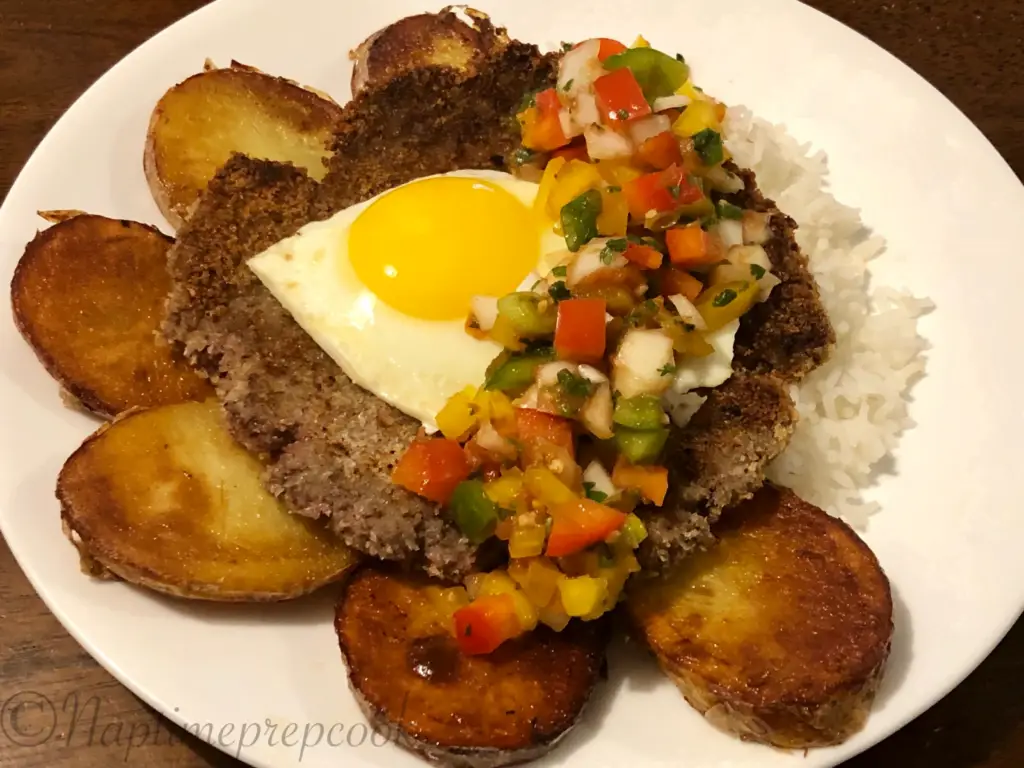
History, Background, and Region of Silpancho
Silpancho, a traditional Bolivian dish, is a culinary delight originating from the Chuquisaca region. With roots deeply embedded in the Bolivian culture, Silpancho reflects the fusion of indigenous flavors with Spanish influences.
This beloved dish has become a symbol of Bolivia’s rich culinary history and is celebrated for its hearty and satisfying nature.
Ingredients
- 1 lb beef, pounded thinly
- 4 cups cooked rice
- 4 eggs
- 2 cups bread crumbs
- 4 potatoes, peeled and sliced
- 1 cup cooked peas
- 1 cup diced tomatoes
- 1 cup diced onions
- 2 cloves garlic, minced
- 1 cup vegetable oil
- Salt and pepper to taste
- Fresh parsley for garnish
Recipe
Preparing the Beef
- Pound the beef thinly and season with salt and pepper.
- Dredge the beef in bread crumbs, ensuring it’s evenly coated.
Cooking the Silpancho
- Heat vegetable oil in a pan over medium heat.
- Fry the breaded beef until golden brown on both sides.
Assembling the Dish
- In a separate pan, sauté onions and garlic until golden.
- Fry the eggs sunny-side-up.
Plating
- Place a portion of rice on a plate, top with the fried beef.
- Surround with sliced potatoes, cooked peas, diced tomatoes, and the sautéed onion mixture.
- Garnish with a fried egg on top and sprinkle with fresh parsley.
Serving Size and Cooking Time
- Serving Size: 4 people
- Estimated Cooking Time: 45 minutes
Nutritional Information (Per Serving)
- Calories: Approximately 700 calories
- Protein: 25g
- Fat: 30g
- Carbohydrates: 80g
- Fiber: 6g
Silpancho’s harmonious blend of textures and flavors showcases the diversity of Bolivian cuisine. As a comforting and satisfying dish, Silpancho is a testament to Bolivia’s culinary heritage and its ability to create dishes that resonate with both locals and international food enthusiasts.
Bolivian Food – Chicharrón

History, Background, and Region of Chicharrón
Chicharrón, a beloved dish in Bolivian cuisine, has its roots in the country’s diverse culinary history. Originating from Spanish influences, Chicharrón has evolved into a quintessential Bolivian comfort food.
Typically prepared during festive occasions, this dish showcases Bolivia’s fusion of indigenous and colonial flavors, creating a delightful gastronomic experience.
Ingredients
- 2 lbs pork belly, cut into chunks
- 1 cup orange juice
- 4 cloves garlic, minced
- 1 teaspoon ground cumin
- 1 teaspoon dried oregano
- Salt and pepper to taste
- 2 cups vegetable oil (for frying)
Recipe
Marinating the Pork
- In a bowl, mix orange juice, minced garlic, ground cumin, dried oregano, salt, and pepper.
- Marinate the pork chunks in the mixture, ensuring they are well-coated.
- Allow the pork to marinate for at least 2 hours or overnight in the refrigerator.
Frying the Chicharrón
- Heat vegetable oil in a deep frying pan over medium-high heat.
- Fry the marinated pork chunks until they become golden brown and crispy.
- Remove the Chicharrón from the oil and place it on a paper towel to drain excess oil.
Serving
- Serve the Chicharrón hot, accompanied by traditional Bolivian sides like llajwa (spicy salsa) and mote (hominy corn).
Serving Size and Cooking Time
- Serving Size: 4 people
- Estimated Cooking Time: 2.5 hours (including marination)
Nutritional Information (Per Serving)
- Calories: Approximately 500 calories
- Protein: 20g
- Fat: 35g
- Carbohydrates: 10g
- Fiber: 2g
Chicharrón’s crispy exterior and flavorful interior make it a popular choice among Bolivians. Whether enjoyed at a family gathering or a festive celebration, this dish represents the heartiness and festive spirit of Bolivian cuisine.
Bolivian Food – Majadito

History, Background, and Region of Majadito
Majadito, a traditional Bolivian dish, reflects the rich culinary heritage of the country. Originating from the eastern lowlands of Bolivia, particularly in the Beni region, Majadito is deeply rooted in the local flavors and indigenous ingredients.
This hearty dish is a testament to the diverse influences that have shaped Bolivian cuisine, blending native ingredients with those introduced during the colonial era.
Ingredients
- 2 cups rice
- 1 lb beef, diced
- 1 onion, finely chopped
- 2 tomatoes, peeled and diced
- 1 bell pepper, chopped
- 2 cloves garlic, minced
- 2 tablespoons vegetable oil
- 1 teaspoon ground cumin
- 1 teaspoon smoked paprika
- Salt and pepper to taste
- 4 cups beef or vegetable broth
- Fresh cilantro for garnish
Recipe
Cooking the Rice
- Rinse the rice thoroughly and set it aside.
- In a large pot, heat vegetable oil over medium heat.
- Add chopped onions and garlic, sauté until translucent.
- Incorporate diced beef, cumin, smoked paprika, salt, and pepper. Cook until the beef is browned.
- Stir in tomatoes and bell peppers, cooking until softened.
Adding the Rice
- Add the rinsed rice to the pot, stirring to combine with the meat and vegetables.
- Pour in the broth, bring to a boil, then reduce heat to a simmer.
- Cover and cook until the rice is tender and has absorbed the liquid, approximately 20-25 minutes.
Serving
- Once cooked, fluff the rice with a fork.
- Garnish with fresh cilantro and serve hot.
Serving Size and Cooking Time
- Serving Size: 4 people
- Estimated Cooking Time: 40 minutes
Nutritional Information (Per Serving)
- Calories: Approximately 450 calories
- Protein: 20g
- Fat: 10g
- Carbohydrates: 70g
- Fiber: 4g
Majadito’s robust flavors and aromatic blend of spices make it a beloved dish across Bolivia. Whether enjoyed as a comforting family meal or during festive occasions, Majadito is a delightful representation of the diverse culinary landscape of this South American nation.
Bolivian Food – Milanesa

History, Background, and Region of Milanesa
Milanesa, a popular dish in Bolivia, has its roots in European cuisine, particularly Italian and Spanish culinary traditions. This breaded and fried meat cutlet has become a cherished part of Bolivian gastronomy, showcasing the country’s fusion of international flavors.
Introduced during the colonial period, Milanesa has evolved over time to incorporate local ingredients and cooking techniques, making it a beloved dish across Bolivia.
Ingredients
- 4 beef or chicken cutlets
- Salt and pepper to taste
- 1 cup all-purpose flour
- 2 eggs, beaten
- 2 cups breadcrumbs
- Vegetable oil for frying
- Lemon wedges for serving
Recipe
Preparing the Meat
- Season the meat cutlets with salt and pepper.
- Dredge each cutlet in flour, ensuring an even coating.
Breading Process
- Place the cutlets (that are now covered in flour) into the beaten eggs.
- Coat the cutlets with breadcrumbs, pressing gently to adhere.
Frying
- Heat vegetable oil in a large skillet over medium heat.
- Fry the breaded cutlets until a light brown color (golden) on both sides.
Serving
- Place the fried Milanesa on paper towels to drain excess oil.
- Serve hot with lemon wedges.
Serving Size and Cooking Time
- Serving Size: 4 people
- Estimated Cooking Time: 20 minutes
Nutritional Information (Per Serving)
- Calories: Approximately 350 calories (varies based on meat choice)
- Protein: 25g
- Fat: 15g
- Carbohydrates: 20g
- Fiber: 2g
Milanesa’s simplicity and deliciousness make it a staple on Bolivian tables. Whether enjoyed with a side of rice, salad, or potatoes, Milanesa reflects Bolivia’s culinary diversity and its ability to embrace and adapt international dishes into its own vibrant food culture.
Bolivian Food – Mondongo

History, Background, and Region of Mondongo
Mondongo, a traditional dish in Bolivia, has deep roots in the country’s indigenous and colonial heritage. Originating from the Spanish dish “mondongo,” Bolivian Mondongo showcases the influence of both indigenous and European culinary traditions.
This hearty soup is a testament to Bolivia’s rich cultural tapestry and the fusion of diverse flavors over centuries.
Ingredients
- 1 lb tripe, cleaned and cut into small pieces
- 1 cup hominy corn, soaked and cooked
- 1 cup potatoes, peeled and diced
- 1 onion, finely chopped
- 2 tomatoes, diced
- 2 carrots, sliced
- 1 bell pepper, chopped
- 3 garlic cloves, minced
- 1 teaspoon ground cumin
- 1 teaspoon paprika
- Salt and pepper to taste
- 2 tablespoons vegetable oil
- 8 cups beef or vegetable broth
- Fresh cilantro for garnish
Recipe
Preparing the Tripe
- Clean the tripe thoroughly, removing any excess fat.
- Cut the tripe into small, bite-sized pieces.
Cooking the Vegetables
- In a large pot, heat vegetable oil over medium heat.
- Sauté onions and garlic until translucent.
- Add tomatoes, bell pepper, carrots, and potatoes. Cook for 5 minutes.
Adding Spices and Broth
- Season with cumin, paprika, salt, and pepper.
- Pour in the broth and bring the mixture to a boil.
- Add the tripe and simmer until the tripe is tender (approximately 1-2 hours).
Incorporating Hominy
- Add the soaked and cooked hominy corn to the pot.
Serving
- Adjust seasoning and let the Mondongo simmer for an additional 15-20 minutes.
- Garnish with fresh cilantro before serving.
Serving Size and Cooking Time
- Serving Size: 6 people
- Estimated Cooking Time: 2-3 hours
Nutritional Information (Per Serving)
- Calories: Approximately 350 calories
- Protein: 20g
- Fat: 10g
- Carbohydrates: 45g
- Fiber: 7g
Mondongo reflects Bolivia’s diverse culinary heritage, blending indigenous and European elements into a comforting and flavorful dish enjoyed across the country.
Bolivian Food – Falso Conejo

History, Background, and Region of Falso Conejo
Falso Conejo” translates to “False Rabbit” in English.
This Bolivian dish is named so because it mimics the flavors and appearance of rabbit, but it is made with more readily available meats such as beef or chicken. The dish showcases the creativity of Bolivian cuisine, providing an interesting and flavorful alternative to traditional rabbit recipes.
It is a popular Bolivian dish, has deep roots in the country’s culinary history. Originating from the traditional Bolivian cuisine, it reflects the cultural richness and diverse flavors of the region.
Ingredients:
- 1 ½ pounds of beef, thinly sliced
- 1 cup all-purpose flour
- 2 eggs, beaten
- 1 cup breadcrumbs
- 1 cup milk
- 2 tablespoons vegetable oil
- 1 onion, finely chopped
- 2 tomatoes, diced
- 2 cloves garlic, minced
- 1 bell pepper, thinly sliced
- 1 cup beef broth
- Salt and pepper to taste
- Vegetable oil for frying
Recipe:
Serving: 4 people
Cooking Time: Approximately 45 minutes
Calories: Around 450 calories per serving
Steps:
1. Prepare the Beef:
- Season the beef slices with salt and pepper.
- Dredge each slice in flour, dip in beaten eggs, and coat with breadcrumbs.
2. Fry the Beef:
- Heat vegetable oil in a pan over medium heat.
- Fry the breaded beef slices until golden brown on both sides.
- Remove and drain excess oil on paper towels.
3. Prepare the Sauce:
- In a separate pan, sauté onions, garlic, and bell pepper in vegetable oil until softened.
- Add diced tomatoes and cook until they break down.
- Pour in beef broth and let it simmer until the sauce thickens.
4. Combine and Serve:
- Place the fried beef slices in the sauce, ensuring they are well-coated.
- Simmer for a few more minutes until the flavors meld.
- Serve the Falso Conejo hot, accompanied by rice or potatoes.
This hearty dish embodies the essence of Bolivian comfort food, blending crispy textures with a flavorful, savory sauce. Enjoy the taste of Bolivia with this delicious Falso Conejo recipe!
Bolivian Food – Fricasé

History, Background, and Region of Fricasé
Fricasé, a beloved dish in Bolivia, has its roots embedded in the country’s culinary traditions. This flavorful stew is a testament to Bolivia’s rich cultural tapestry and diverse gastronomic heritage.
Ingredients:
- 2 pounds pork, cut into chunks
- 1 cup hominy corn, soaked overnight
- 1 large onion, finely chopped
- 3 tomatoes, peeled and diced
- 3 garlic cloves, minced
- 1 cup peas
- 1 cup carrots, sliced
- 1 cup green beans, chopped
- 2 potatoes, peeled and diced
- 1 cup white wine
- 2 tablespoons vegetable oil
- 1 tablespoon aji amarillo paste (yellow chili paste)
- 1 tablespoon ground cumin
- 1 tablespoon dried oregano
- Salt and pepper to taste
- Hard-boiled eggs for garnish
- Fresh cilantro for garnish
Recipe:
Serving: 6 people
Cooking Time: Approximately 2 hours
Calories: Around 550 calories per serving
Steps:
1. Marinate the Pork:
- In a bowl, marinate the pork with aji amarillo paste, ground cumin, dried oregano, salt, and pepper. Allow it to sit for at least 30 minutes.
2. Sear the Pork:
- Heat vegetable oil in a large pot over medium-high heat.
- Sear the marinated pork until browned on all sides.
3. Create the Stew Base:
- Add chopped onions and minced garlic to the pot. Sauté until onions are translucent.
- Pour in white wine to deglaze the pot.
- Add diced tomatoes and cook until they form a thick sauce.
4. Cook the Stew:
- Introduce soaked hominy corn, peas, carrots, green beans, and diced potatoes to the pot.
- Pour enough water to cover the ingredients.
- Simmer over low heat until the meat is tender and the flavors meld.
5. Garnish and Serve:
- Garnish the Fricasé with hard-boiled eggs and fresh cilantro.
- Serve hot, and enjoy this hearty Bolivian stew with rice or bread.
Fricasé embodies the soul-warming essence of Bolivian cuisine, bringing together robust flavors and wholesome ingredients in a comforting stew. Share the taste of Bolivia with this delightful Fricasé recipe!
Bolivian Food – Zonzo

History and Background
Zonzo is a traditional Bolivian dish that reflects the rich culinary heritage of the region.
Originating from the Andean highlands of Bolivia, this dish is deeply rooted in the country’s indigenous culture and has been passed down through generations.
Ingredients:
- 2 cups white cornmeal
- 1 cup fava beans, cooked
- 1 cup green peas
- 1 cup potatoes, diced
- 1 cup carrots, diced
- 1 onion, finely chopped
- 3 cloves garlic, minced
- 1/2 cup vegetable oil
- Salt and pepper to taste
- Fresh cilantro for garnish
Recipe: Servings: 4-6
Cooking Time: Approximately 1.5 hours
Calories: Caloric content may vary; approximate 300-400 calories per serving.
Instructions:
1. Prepare the Cornmeal Base:
- In a large bowl, combine white cornmeal with water to form a smooth, thick paste.
- Cook the cornmeal mixture over low heat, stirring constantly until it thickens and becomes a dense consistency.
2. Cook the Vegetables:
- In a separate pan, heat vegetable oil and sauté chopped onions and garlic until golden brown.
- Add diced potatoes, carrots, fava beans, and green peas to the pan. Cook until the vegetables are tender.
3. Combine and Season:
- Mix the cooked vegetables into the cornmeal base, ensuring an even distribution.
- Season the mixture with salt and pepper to taste. Continue cooking over low heat, stirring frequently.
4. Serve:
- Once the Zonzo has reached a thick, porridge-like consistency, it is ready to be served.
- Garnish with fresh cilantro for added flavor and freshness.
Zonzo is a hearty and nutritious dish that showcases the diverse flavors of Bolivian cuisine. Serve it hot as a comforting meal and enjoy the unique blend of textures and tastes that make Zonzo a beloved part of Bolivian gastronomy.
Bolivian Food – Queso Humacha

History and Background
Queso Humacha is a traditional Bolivian dish that holds a special place in the country’s culinary heritage. Originating from the Andean region, this flavorful and hearty dish is often associated with Bolivian celebrations and family gatherings.
The name “Queso Humacha” translates to “cheese in a spicy sauce,” reflecting the key elements of the dish.
Ingredients
- 2 cups fresh white cheese, crumbled
- 1 cup yellow potatoes, peeled and diced
- 1 cup choclo (Andean corn), cooked and kernels removed
- 1 cup green peas
- 1 cup fava beans, cooked
- 1 onion, finely chopped
- 2 cloves garlic, minced
- 2 tablespoons vegetable oil
- 2 tablespoons aji amarillo paste (yellow chili pepper paste)
- 1/2 cup evaporated milk
- 4 cups vegetable or chicken broth
- Salt and pepper to taste
- Fresh mint leaves for garnish
Recipe: Servings: 4-6
Cooking Time: Approximately 1.5 hours
Calories: Caloric content may vary; approximate 400-500 calories per serving.
Instructions
1. Sauté Aromatics:
- In a large pot, heat vegetable oil over medium heat. Sauté chopped onions and minced garlic until softened and fragrant.
2. Add Vegetables:
- Incorporate diced potatoes, choclo kernels, green peas, and fava beans into the pot. Stir well to combine.
3. Introduce Aji Amarillo:
- Add aji amarillo paste to the pot, providing a distinct spicy flavor and vibrant color to the dish.
4. Pour Broth:
- Pour vegetable or chicken broth into the pot, ensuring all ingredients are submerged. Bring the mixture to a gentle boil.
5. Add Cheese and Milk:
- Gradually add crumbled white cheese to the pot, stirring to melt and incorporate into the broth.
- Pour in evaporated milk, enhancing the creaminess of the dish.
6. Season and Simmer:
- Season with salt and pepper to taste. Allow the Queso Humacha to simmer on low heat until all ingredients are tender and flavors meld.
7. Serve:
- Ladle the Queso Humacha into bowls, garnishing with fresh mint leaves for a burst of freshness.
Queso Humacha embodies the essence of Bolivian comfort food, bringing together diverse Andean ingredients in a delightful cheese-infused concoction. Share this dish with loved ones to experience the warmth and richness of Bolivian culinary traditions.
Bolivian Food – Charquekan

History and Background
Charquekan, a renowned Bolivian dish, traces its origins to the Altiplano region, situated at high altitudes in Bolivia. The dish is a testament to Bolivia’s rich culinary heritage, reflecting the influence of indigenous cultures and their resourceful methods of preserving meat.
Charquekan typically features charque, which is sun-dried and salted llama or beef, and showcases the country’s ability to create flavorful dishes with staple ingredients.
Ingredients
- 1 pound charque (sun-dried and salted llama or beef), shredded
- 2 tablespoons vegetable oil
- 1 large onion, finely chopped
- 2 cloves garlic, minced
- 2 tomatoes, peeled, seeded, and diced
- 2 potatoes, peeled and diced
- 2 carrots, peeled and sliced
- 1/2 cup green peas
- 1/2 cup fava beans, cooked
- 2 tablespoons aji amarillo paste (yellow chili pepper paste)
- 4 cups beef or vegetable broth
- Salt and pepper to taste
- Fresh parsley for garnish
Recipe: Servings: 4-6
Cooking Time: Approximately 1.5 hours
Calories: Caloric content may vary; approximate 350-450 calories per serving.
Instructions
1. Prepare Charque:
- If charque is not pre-shredded, soak it in water to reduce saltiness, then shred into fine pieces.
2. Sauté Aromatics:
- In a large pot, heat vegetable oil over medium heat. Sauté chopped onions and minced garlic until softened and golden.
3. Add Vegetables:
- `Incorporate diced tomatoes, potatoes, carrots, green peas, and fava beans into the pot. Stir well to combine.`Incorporate diced tomatoes, potatoes, carrots, green peas, and fava beans into the pot. Stir well to combine.
4. Introduce Aji Amarillo:
- Add aji amarillo paste to the pot, providing a subtle heat and vibrant color to the dish.
5. Add Charque:
- Include the shredded charque into the pot, ensuring it is evenly distributed among the vegetables.
6. Pour Broth:
- Pour beef or vegetable broth into the pot, allowing the ingredients to simmer and meld flavors. Adjust salt and pepper to taste.
7. Simmer to Perfection:
- Let the Charquekan simmer on low heat until all components are tender, and the flavors meld into a harmonious blend.
8. Serve:
- Ladle the Charquekan into bowls, garnishing with fresh parsley for added freshness and color.
Charquekan encapsulates the essence of Bolivian highland cuisine, offering a savory blend of sun-dried meat, vibrant vegetables, and aromatic spices. Savor this hearty dish as it transports you to the unique culinary landscape of Bolivia.
Bolivian Food – K’ala phurka

K’ala Phurka, a traditional Bolivian dish, hails from the Andean region, where indigenous culinary practices have flourished for centuries. The dish showcases Bolivia’s cultural diversity and the integration of native ingredients.
K’ala Phurka often features native tubers and grains, reflecting the resilience and resourcefulness of Andean communities.
Ingredients
- 2 cups quinoa, rinsed
- 1 cup wheat grains
- 1 cup barley grains
- 1 cup fava beans, soaked and peeled
- 4 cups water
- 1 cup habas (broad beans)
- 1 cup peas
- 1 cup carrots, diced
- 1 cup potatoes, diced
- 1 cup cheese, grated
- 1/2 cup green onions, finely chopped
- 1/2 cup fresh cilantro, chopped
- 1/4 cup aji colorado paste (red chili pepper paste)
- Salt to taste
Recipe: Servings: 6-8
Cooking Time: Approximately 1.5 hours
Calories: Caloric content may vary; approximate 400-500 calories per serving.
Instructions
1. Cook Grains:
- In a pot, combine quinoa, wheat grains, and barley with water. Cook until grains are tender.
2. Prepare Vegetables:
- In a separate pot, boil fava beans, peas, carrots, and potatoes until they reach desired tenderness.
3. Combine Grains and Vegetables:
- Mix the cooked grains with the boiled vegetables, creating a hearty base for K’ala Phurka.
4. Add Cheese:
- Incorporate grated cheese into the mixture, allowing it to melt and add richness to the dish.
5. Introduce Aji Colorado:
- Add aji colorado paste, providing a mild heat and vibrant color to the dish.
6. Season with Salt:
- Adjust salt according to taste preferences, ensuring a well-balanced flavor profile.
7. Garnish:
- Sprinkle chopped green onions and fresh cilantro over the K’ala Phurka, enhancing its visual appeal and adding a burst of freshness.
8. Serve Hot:
- Present the K’ala Phurka in individual bowls, highlighting the diverse textures and flavors of Andean cuisine.
K’ala Phurka stands as a testament to Bolivia’s cultural wealth, combining nutrient-rich grains with locally sourced vegetables. This wholesome dish captures the essence of Andean culinary traditions, offering a delicious and satisfying meal.
Bolivian Food – Chola Sandwich

History and Background
The Chola Sandwich is a culinary gem originating from the vibrant street food scene in Bolivia, particularly in La Paz. Named after the indigenous Chola women known for their distinctive traditional clothing, this sandwich embodies the fusion of Bolivian and global flavors.
It reflects Bolivia’s multicultural identity, combining traditional ingredients with modern culinary influences.
Ingredients:
- 1 lb thinly sliced beef (marinated with cumin, paprika, garlic, and salt)
- 4 Bolivian-style rolls (marraquetas)
- 1 cup llajwa (Bolivian salsa)
- 1 cup curtido (pickled vegetables)
- 1 avocado, sliced
- 4 fried eggs
- 1 cup shredded lettuce
- 1 cup sliced tomatoes
- 1 cup grated cheese
- 1/2 cup mayonnaise
- Salt and pepper to taste
Recipe: Servings: 4
Cooking Time: Approximately 30 minutes
Calories: Caloric content may vary; approximate 600-700 calories per serving.
Instructions:
1. Marinate and Cook Beef:
- Season the beef slices with cumin, paprika, garlic, and salt. Cook until well-done, achieving a flavorful and tender result.
2. Prepare Bolivian-Style Rolls:
- Cut the marraquetas horizontally, creating a base for the Chola Sandwich.
3. Assemble Sandwich Layers:
- On the bottom half of each roll, layer shredded lettuce, sliced tomatoes, and a generous portion of the cooked beef.
4. Add Avocado and Eggs:
- Place sliced avocado and a fried egg on top of the beef layer, adding creaminess and richness.
5. Drizzle with Sauces:
- Spoon llajwa (Bolivian salsa) and mayonnaise over the sandwich, enhancing its flavor profile.
6. Top with Pickled Vegetables:
- Add a layer of curtido (pickled vegetables) for a tangy and crunchy element.
7. Sprinkle with Cheese:
- Generously sprinkle grated cheese over the top, allowing it to melt and bind the ingredients together.
8. Close and Serve:
- Place the other half of the marraqueta on top, pressing gently to secure all layers. Serve the Chola Sandwich immediately, capturing the diverse and bold flavors of Bolivian street food.
The Chola Sandwich is a celebration of Bolivia’s culinary diversity, marrying traditional and contemporary elements to create a delicious and visually appealing street food masterpiece. Enjoy this flavorful sandwich that pays homage to Bolivia’s rich cultural tapestry.
Conclusion
Bolivian cuisine offers a tantalizing journey through the diverse flavors and culinary traditions of this vibrant South American nation. From the rich and hearty dishes of the highlands to the fresh and flavorful creations of the Amazon basin, Bolivian food reflects the country’s cultural diversity and indigenous heritage.
Whether savoring the comforting warmth of a bowl of traditional salteñas or indulging in the exotic flavors of aji de gallina, every bite tells a story of Bolivia’s rich history and culinary evolution. So, whether you’re exploring the bustling markets of La Paz or dining in a cozy restaurant tucked away in the Andes, be sure to savor every moment and every bite of Bolivian cuisine.
With its bold flavors, vibrant colors, and cultural significance, Bolivian food is truly a feast for the senses and a culinary experience not to be missed.
Frequently Asked Questions
What are some staple ingredients in traditional Bolivian cuisine?
Bolivian cuisine relies heavily on staple ingredients that have been central to the country’s culinary traditions for centuries. Quinoa, potatoes, corn, and various meats are foundational elements.
Quinoa, in particular, holds a revered status, known for its high nutritional value and versatility. Potatoes, which originated in the Andean region, are featured in numerous dishes, showcasing the diverse varieties grown in Bolivia.
Corn is another essential ingredient, often used in both savory and sweet preparations, contributing to the rich tapestry of Bolivian flavors.
How has Bolivia’s history influenced the diversity of its cuisine?
Bolivia’s culinary diversity is a direct reflection of its complex history. The blending of indigenous, Spanish, and other South American influences has created a unique gastronomic landscape.
Indigenous traditions, introduced long before Spanish colonization, laid the foundation for many dishes. The arrival of the Spanish brought new ingredients and cooking techniques, further enriching Bolivian cuisine.
Additionally, the influences of neighboring countries have contributed to the diverse flavors found in Bolivia’s culinary repertoire.
Can you elaborate on the significance of Salteñas in Bolivian cuisine?
Salteñas, a type of savory pastry, hold a special place in Bolivian cuisine and culture. These delectable handheld treats are akin to empanadas but distinct in their preparation and flavors.
Filled with a savory mixture of meat, potatoes, peas, and sometimes olives and eggs, Salteñas encapsulate the diverse tastes of Bolivia.
Often enjoyed as a snack or during special occasions, Salteñas are a symbol of Bolivia’s culinary identity and are cherished for their flavorful fillings encased in a golden, slightly sweet crust.
How does Bolivia’s geography impact the variety of ingredients in its cuisine?
Bolivia’s diverse geography, ranging from high-altitude Andean regions to tropical lowlands, significantly influences the variety of ingredients available in its cuisine. The altiplano, or high plateau, provides a home for quinoa and hearty tubers like potatoes.
The lowlands yield tropical fruits, while the Amazon rainforest contributes unique ingredients. This geographical diversity not only shapes the availability of ingredients but also influences regional preferences and cooking methods throughout the country.
What role do indigenous ingredients play in Bolivian food recipes?
Indigenous ingredients play a central role in Bolivian food recipes, reflecting the deep connection to the country’s pre-Columbian roots. Quinoa, a nutrient-dense grain, is a prime example, featuring prominently in both traditional and modern dishes.
Potatoes, with their countless varieties, are another staple deeply ingrained in Bolivian culinary traditions. Indigenous ingredients not only contribute to the flavors but also highlight Bolivia’s commitment to preserving its cultural heritage through its cuisine.
How does the use of natural, unprocessed ingredients contribute to the healthiness of Bolivian cuisine?
Bolivian cuisine is often celebrated for its healthiness, attributed to the emphasis on natural, unprocessed ingredients. Staple foods like quinoa, known for its high protein content, and a variety of fresh vegetables contribute to the nutritional density of Bolivian meals.
The reliance on local, seasonal produce promotes a balanced and wholesome approach to eating. Overall, the incorporation of unprocessed ingredients aligns with a holistic view of well-being in Bolivian culinary traditions.
Can you share insights into the traditional methods of preparation in Bolivian cooking?
Traditional methods of preparation in Bolivian cooking often involve time-honored techniques passed down through generations. Slow cooking, particularly in stews like Sopa de Maní, allows flavors to meld and intensify.
Many dishes involve grilling or roasting meats, infusing them with smoky notes. Handheld delights like Salteñas showcase the artistry of dough folding and filling techniques. The traditional methods not only impart unique flavors but also connect Bolivians to their cultural roots, creating a culinary legacy that stands the test of time.

